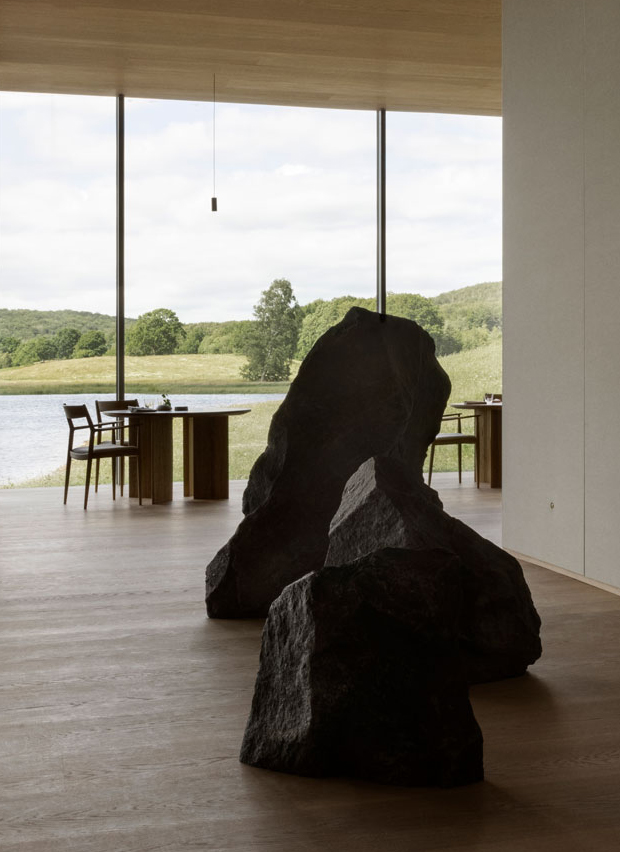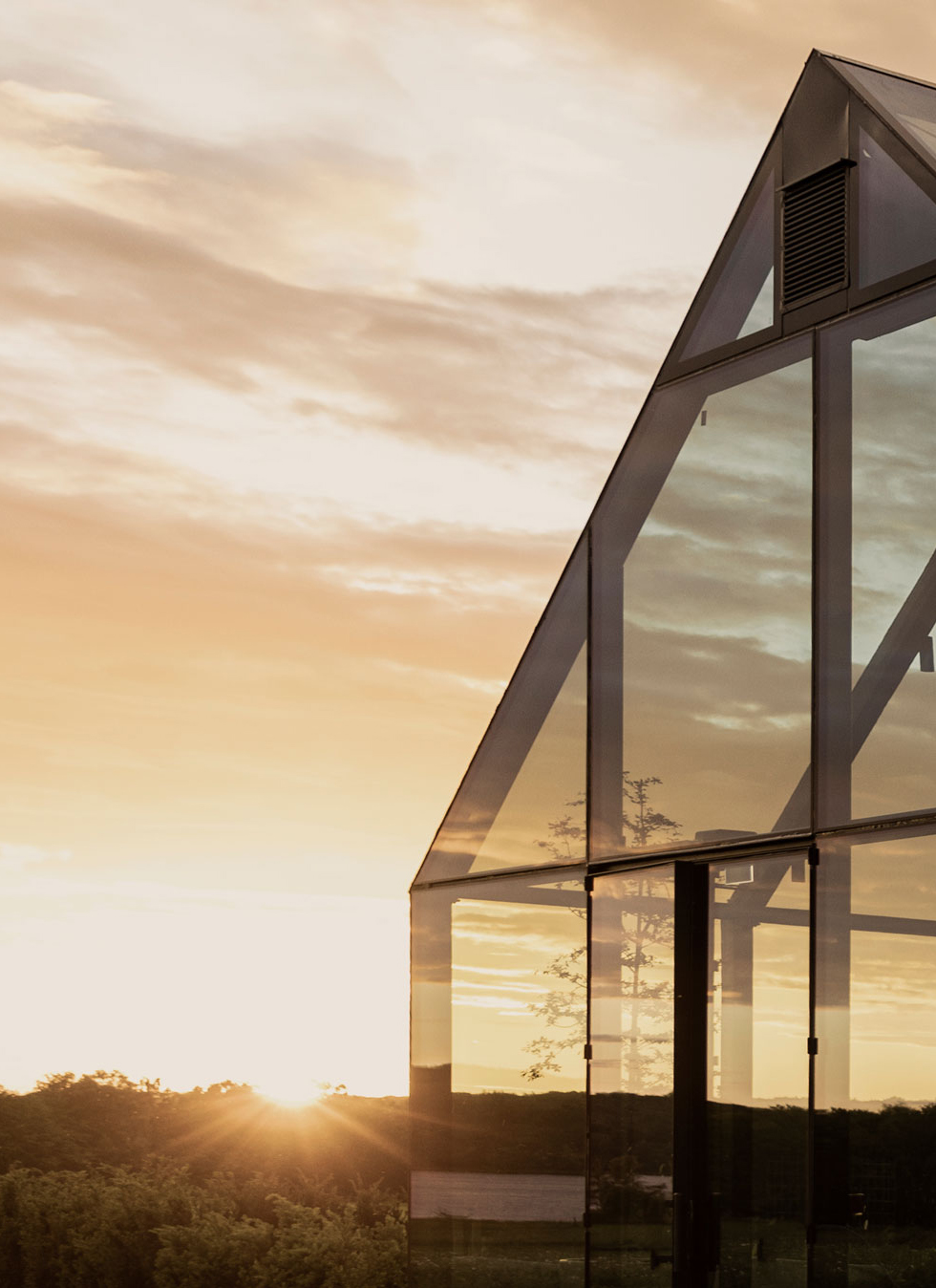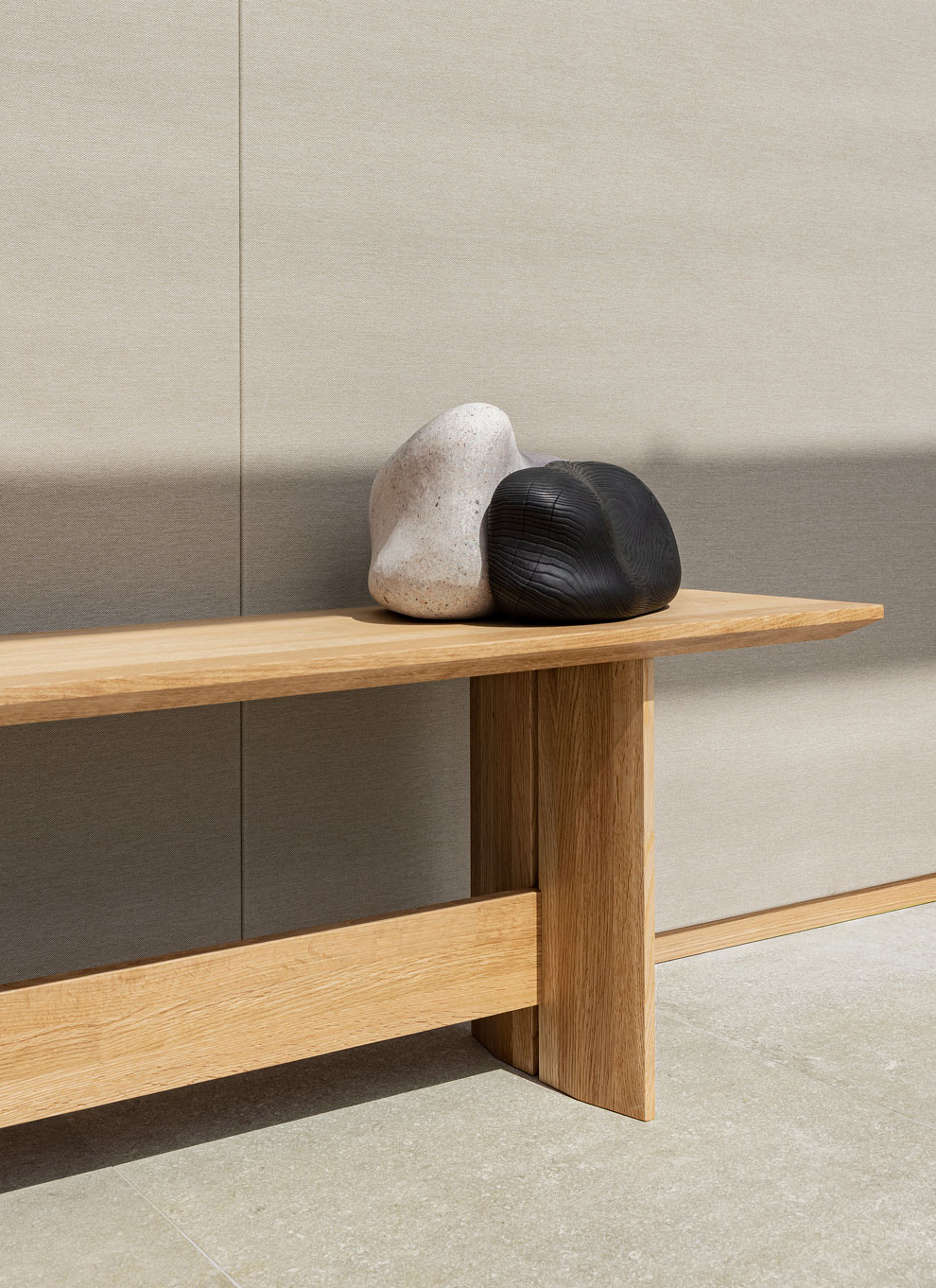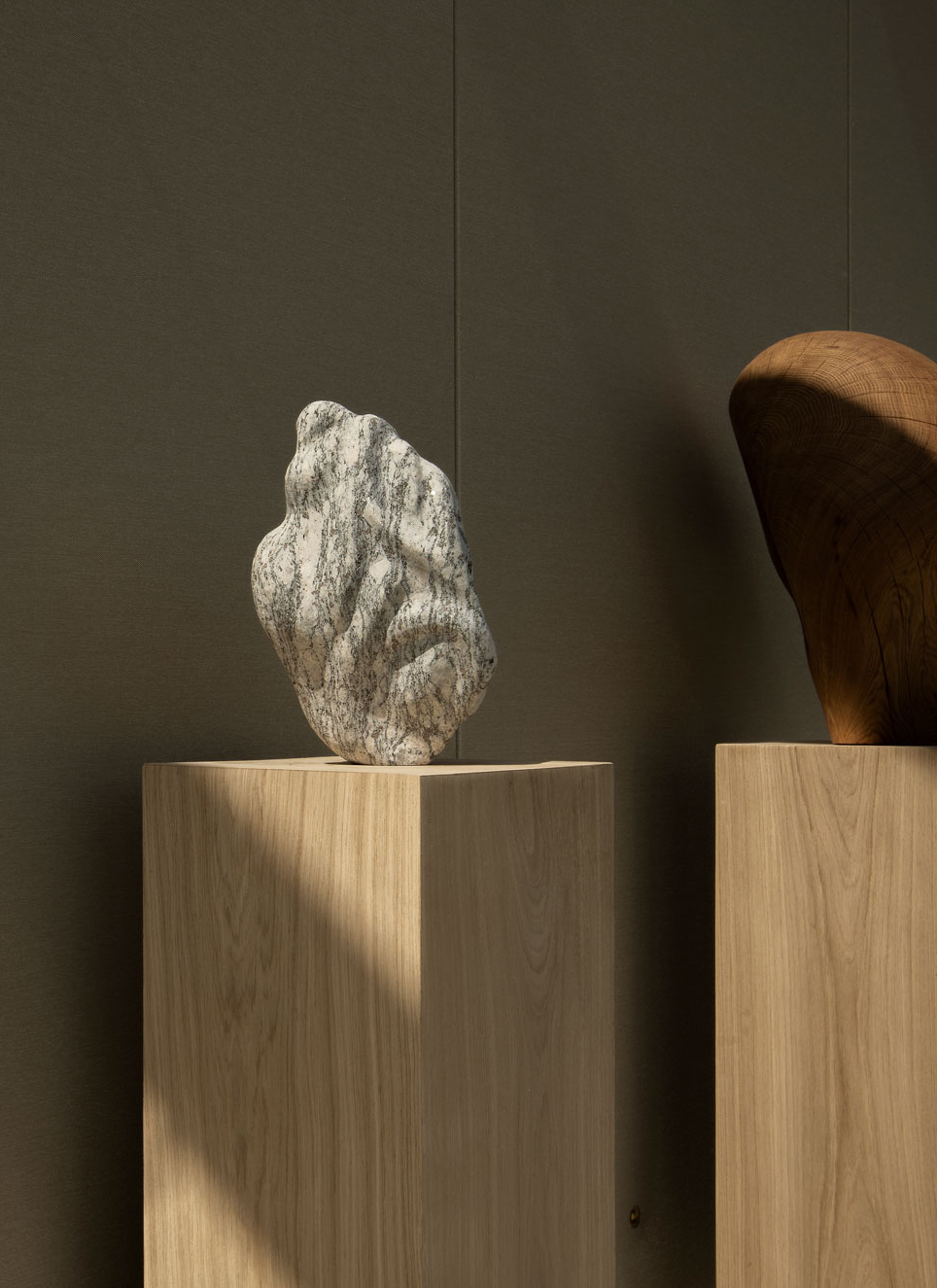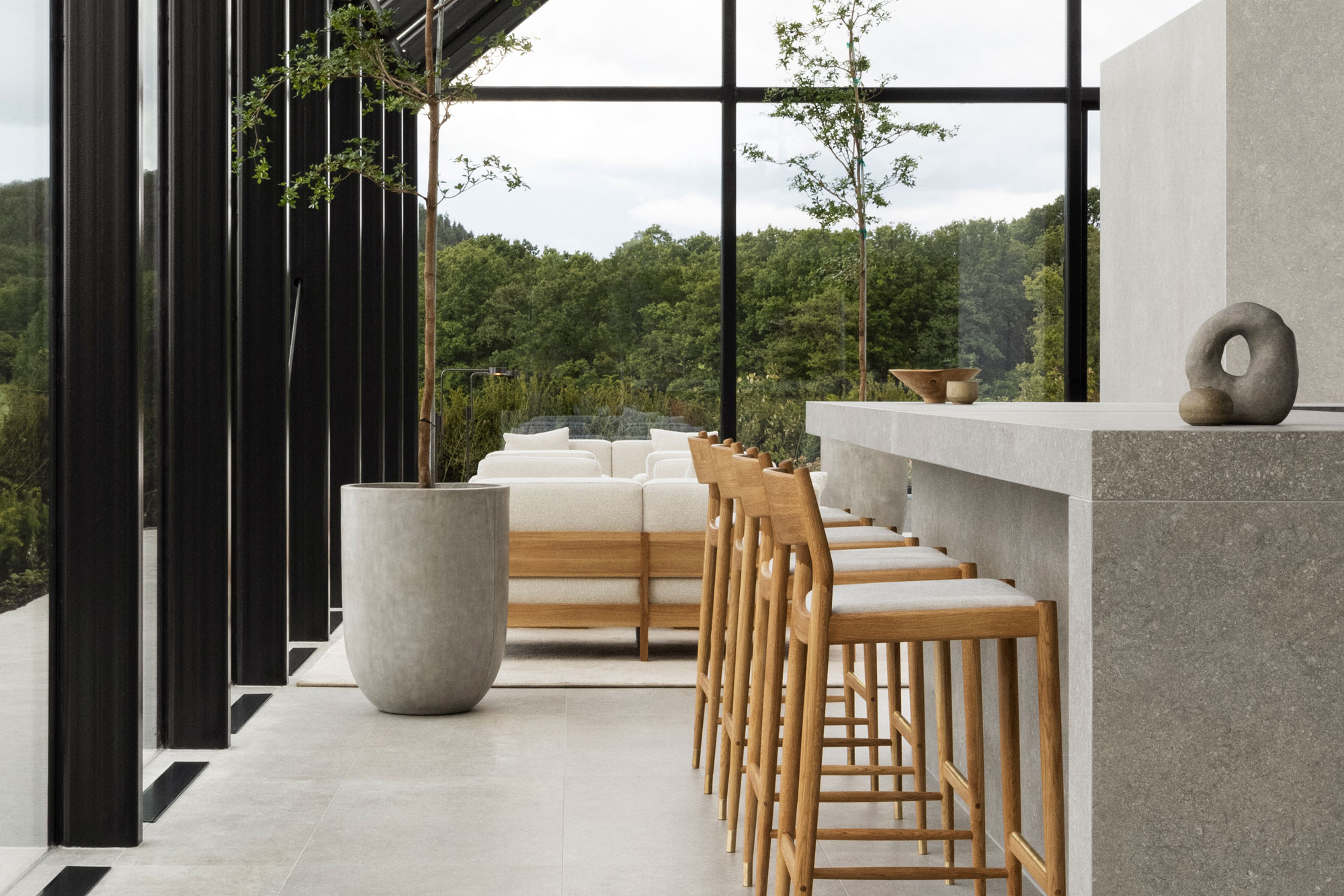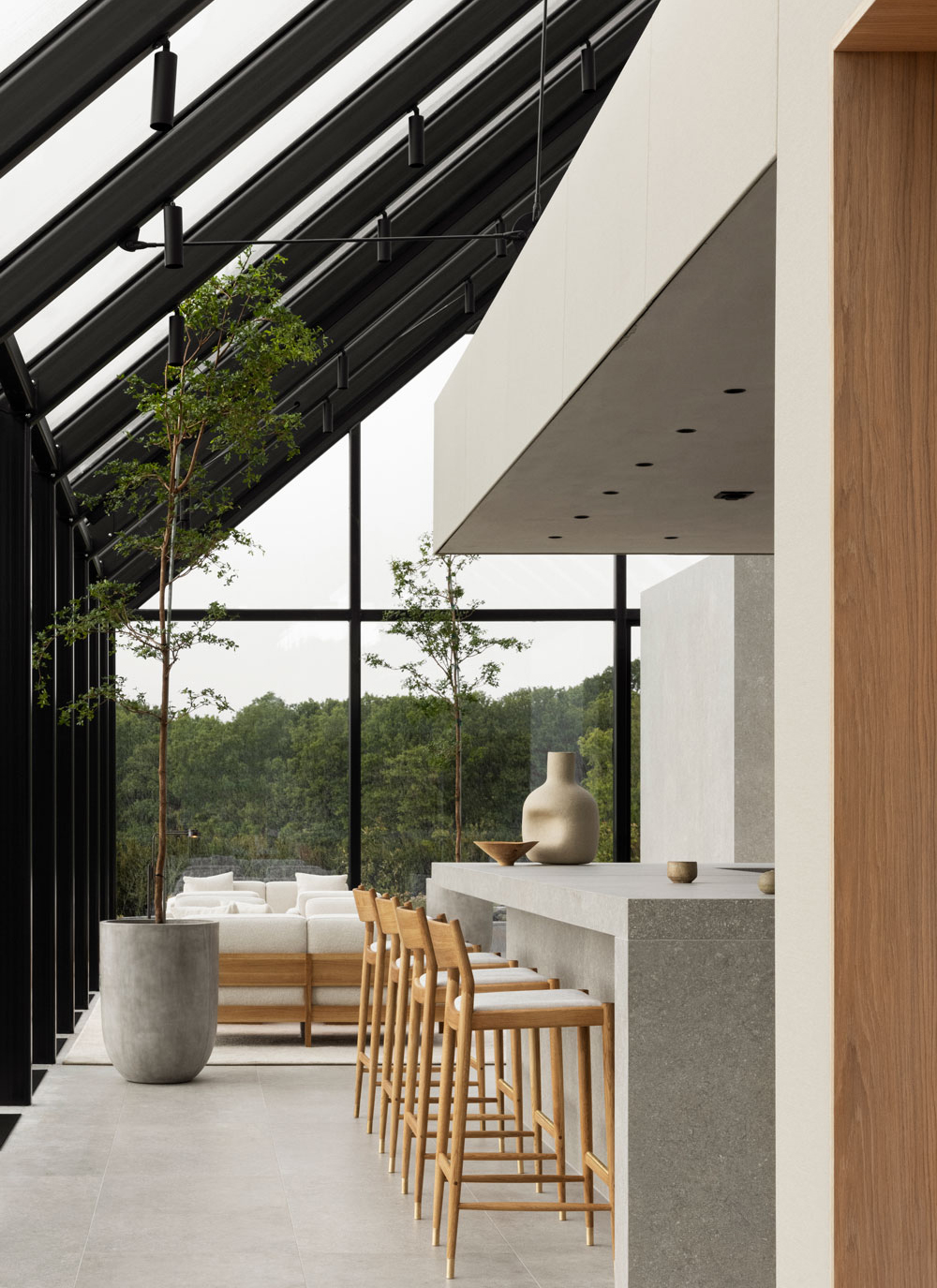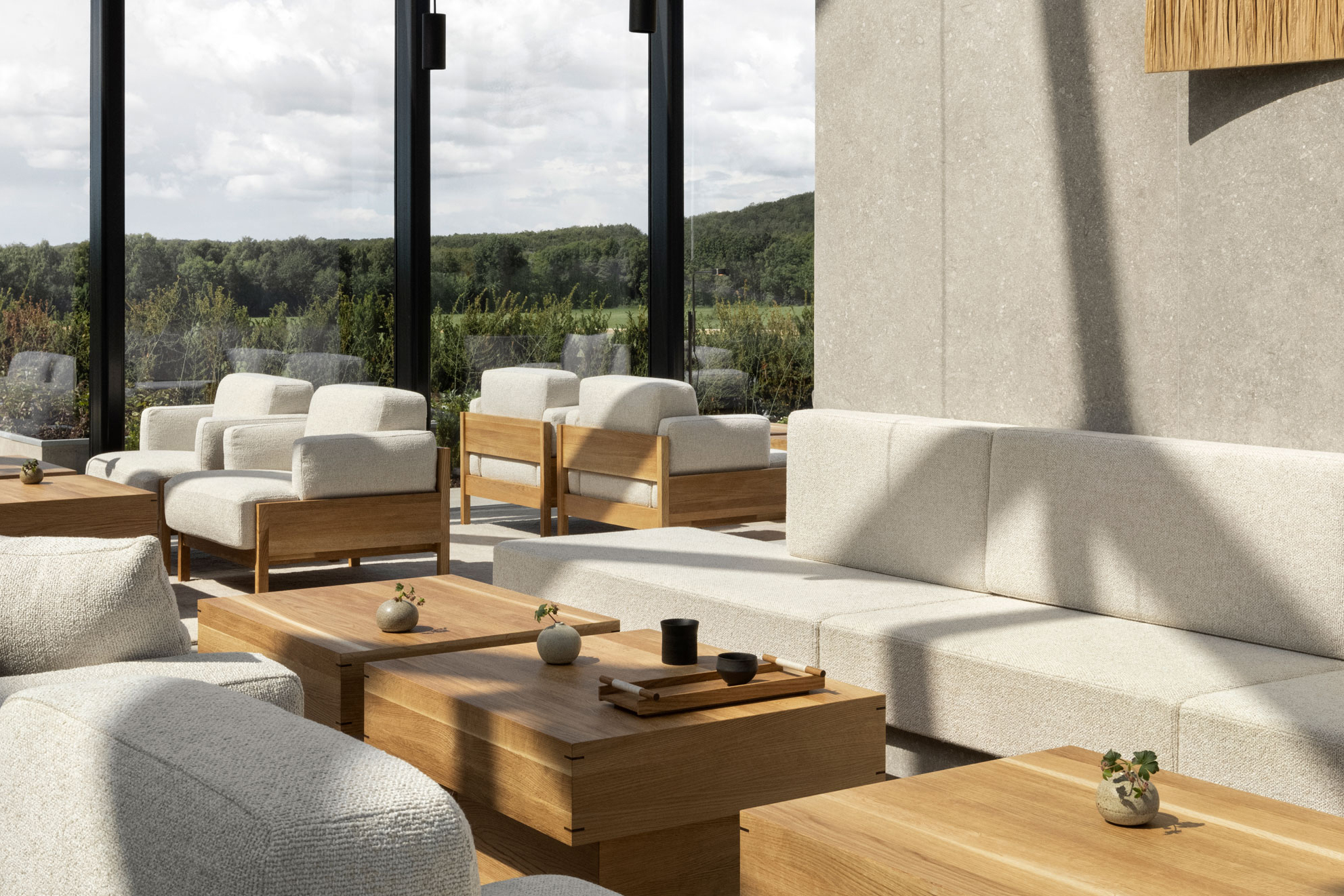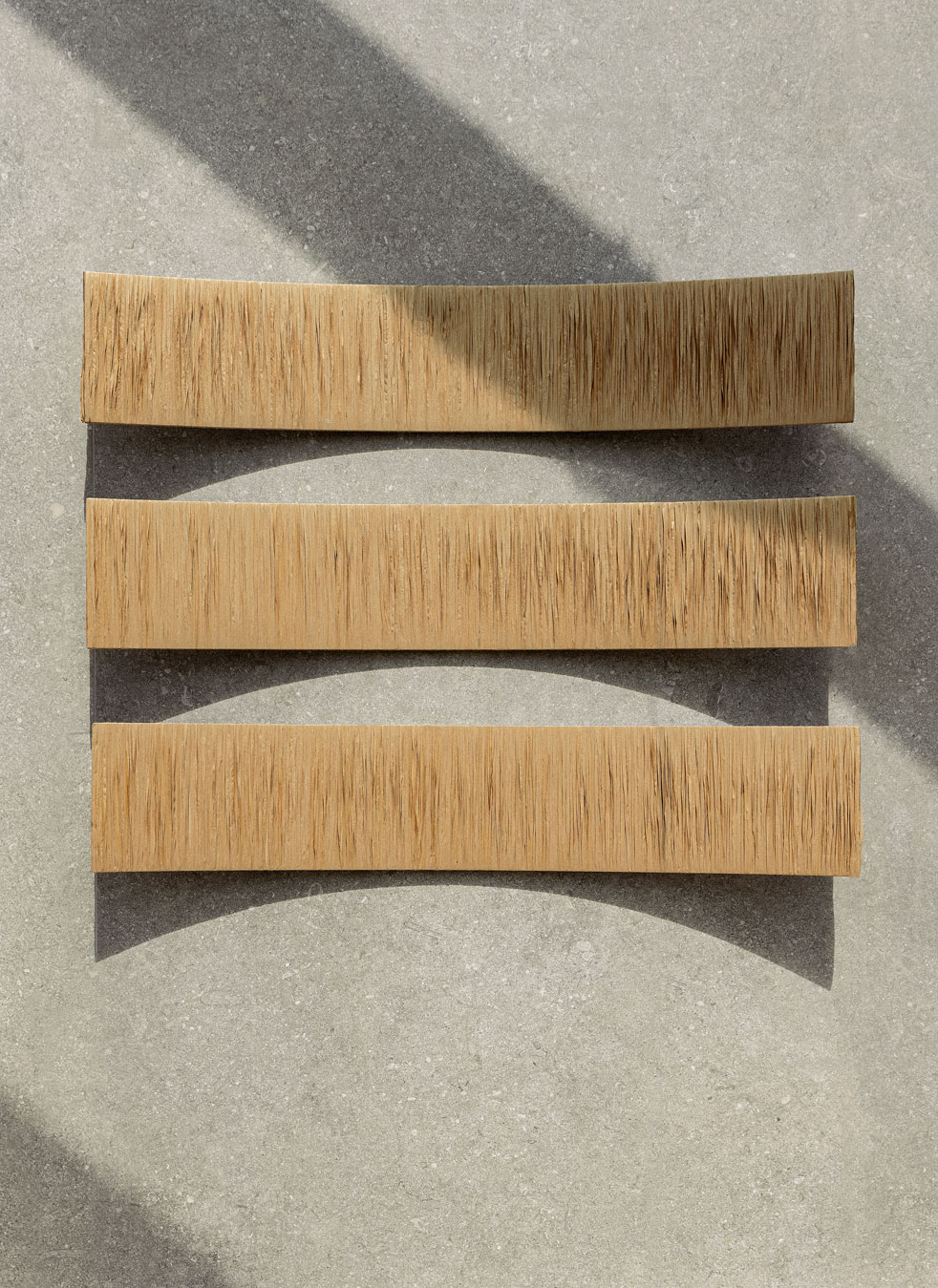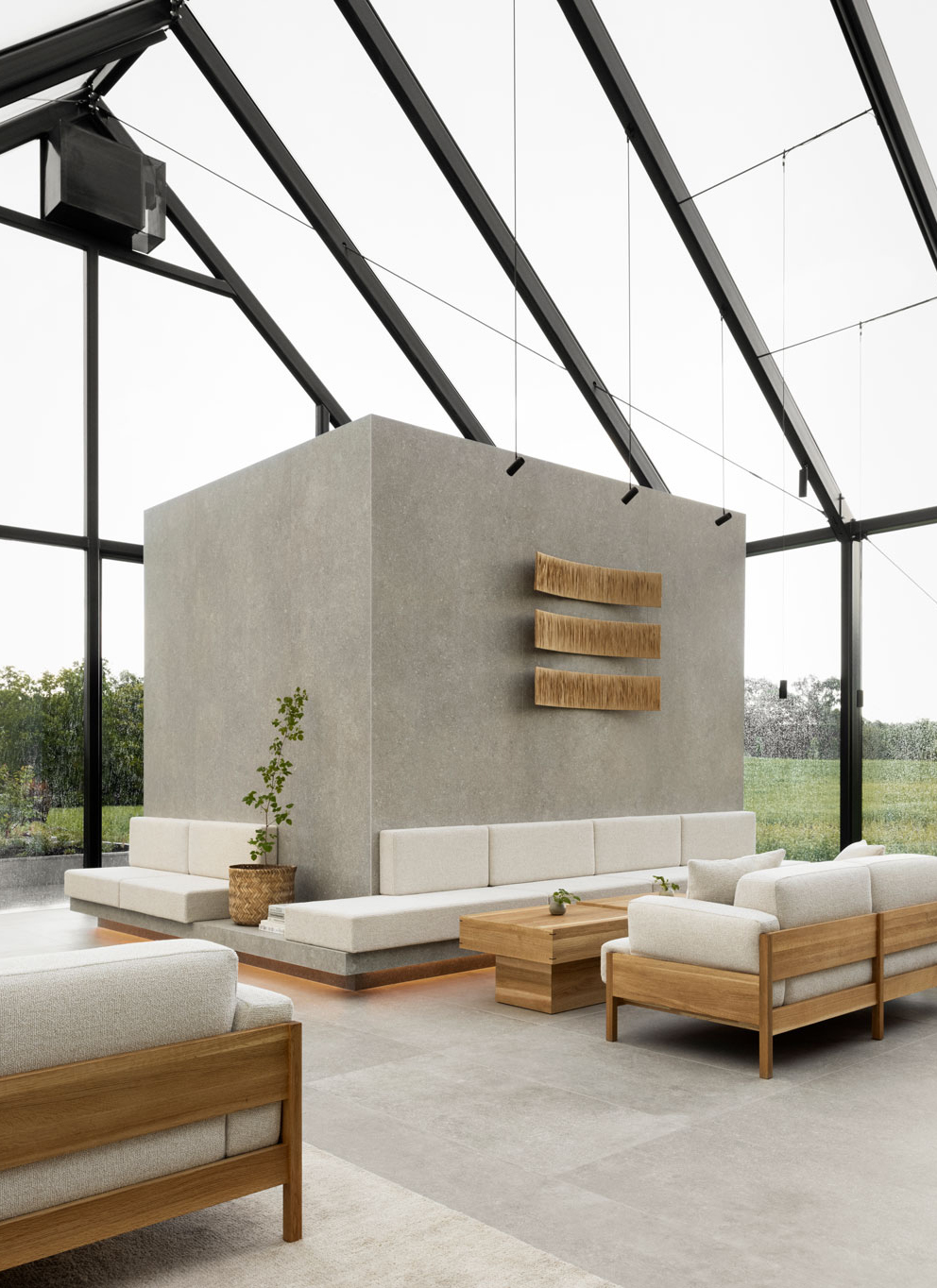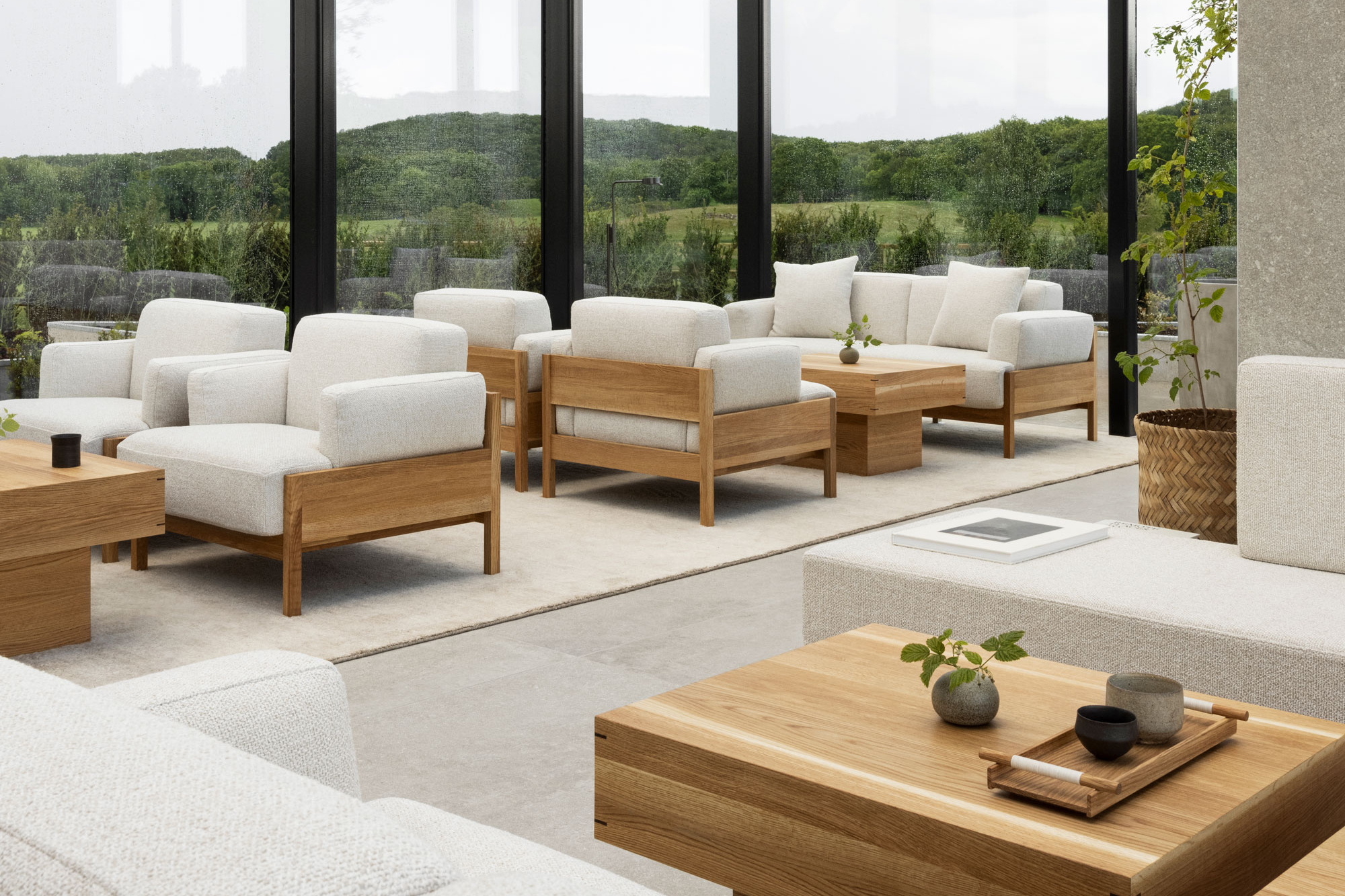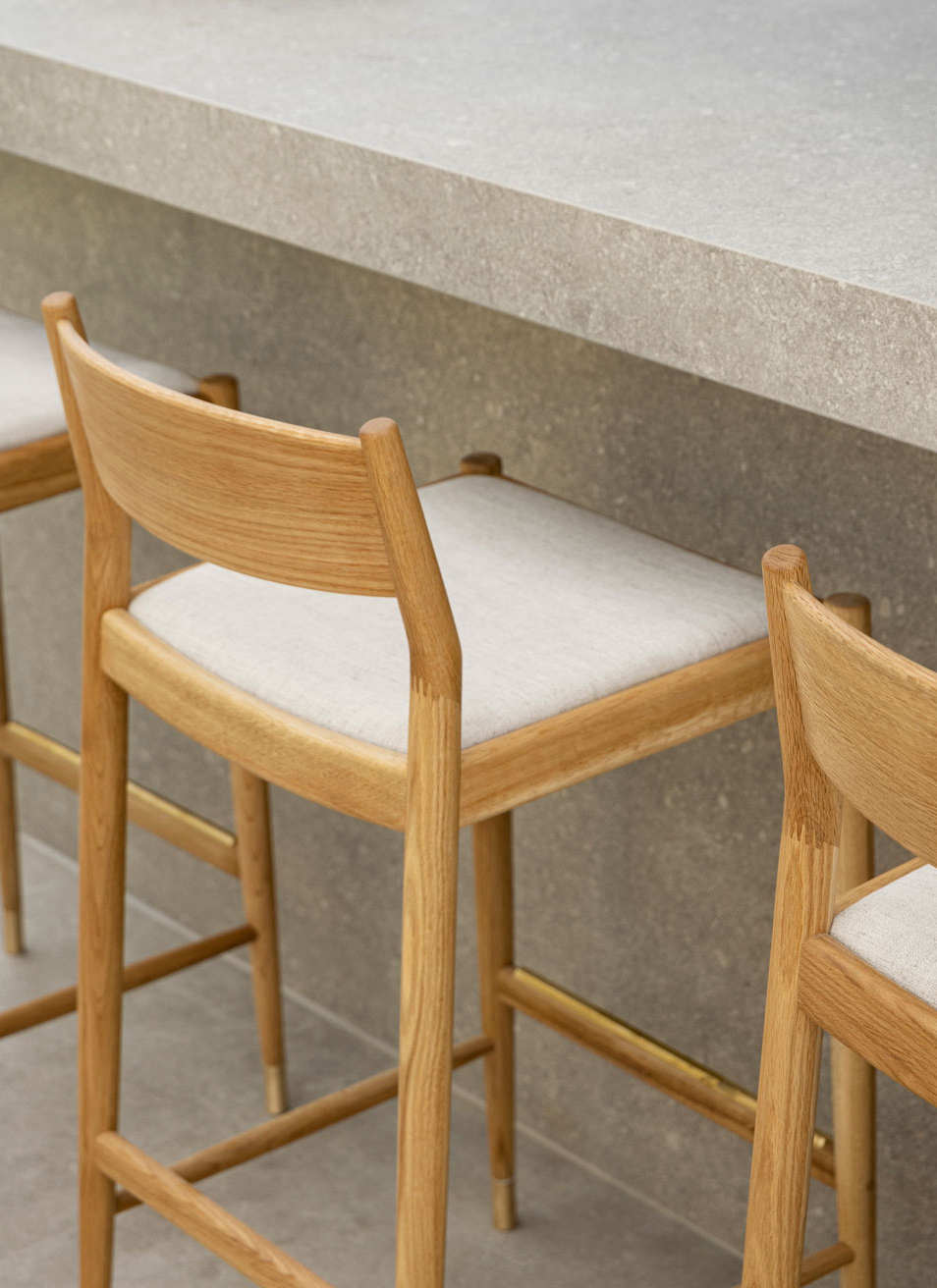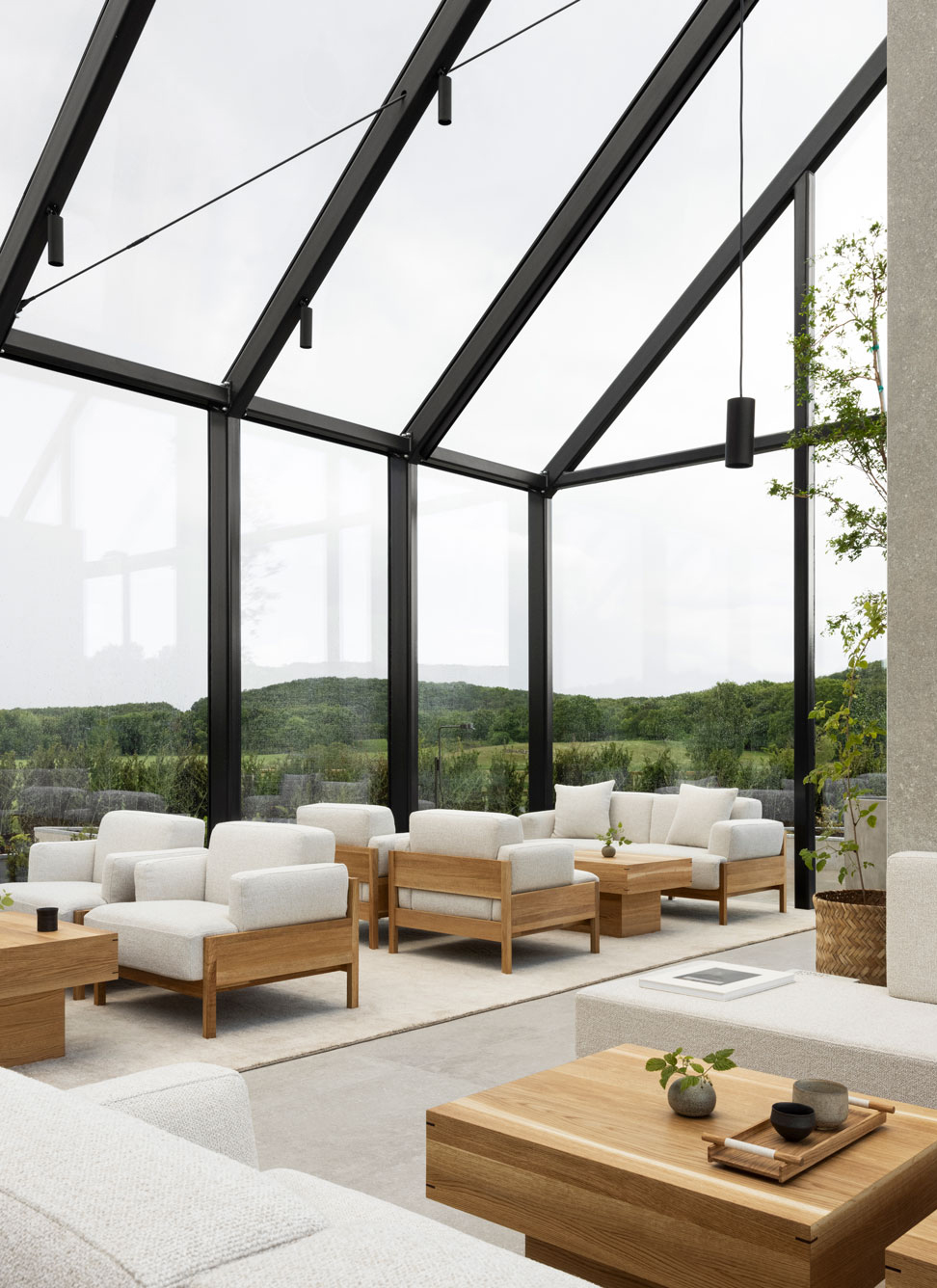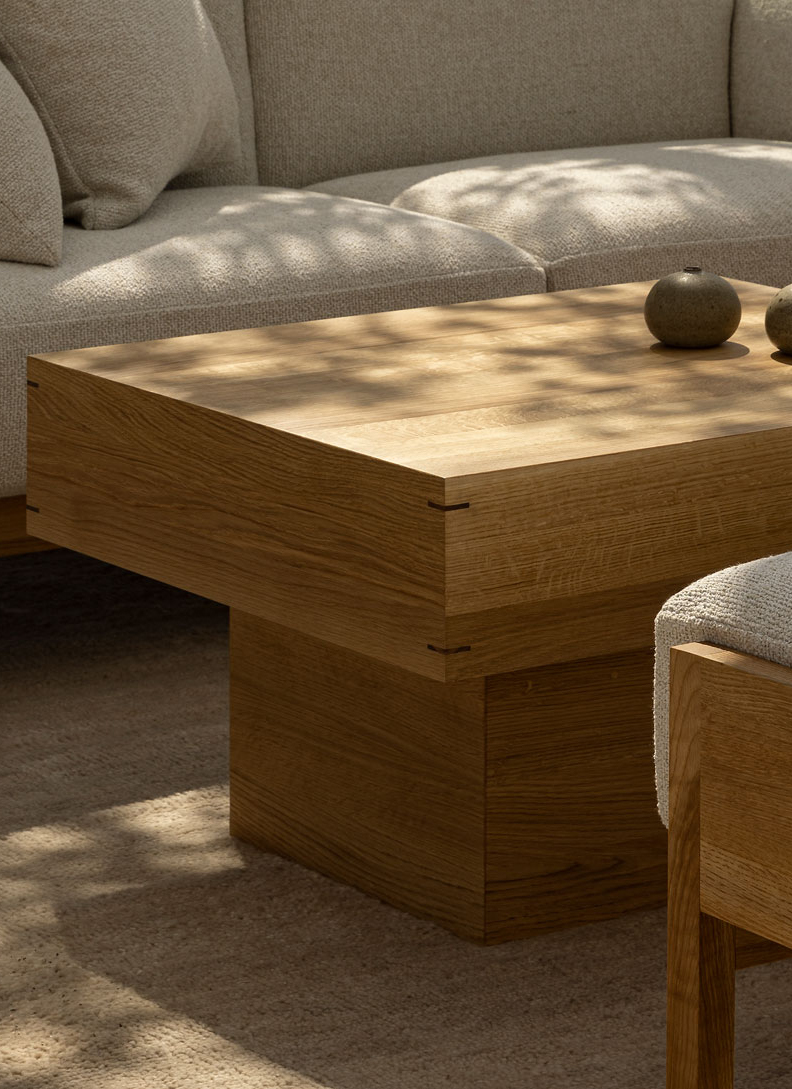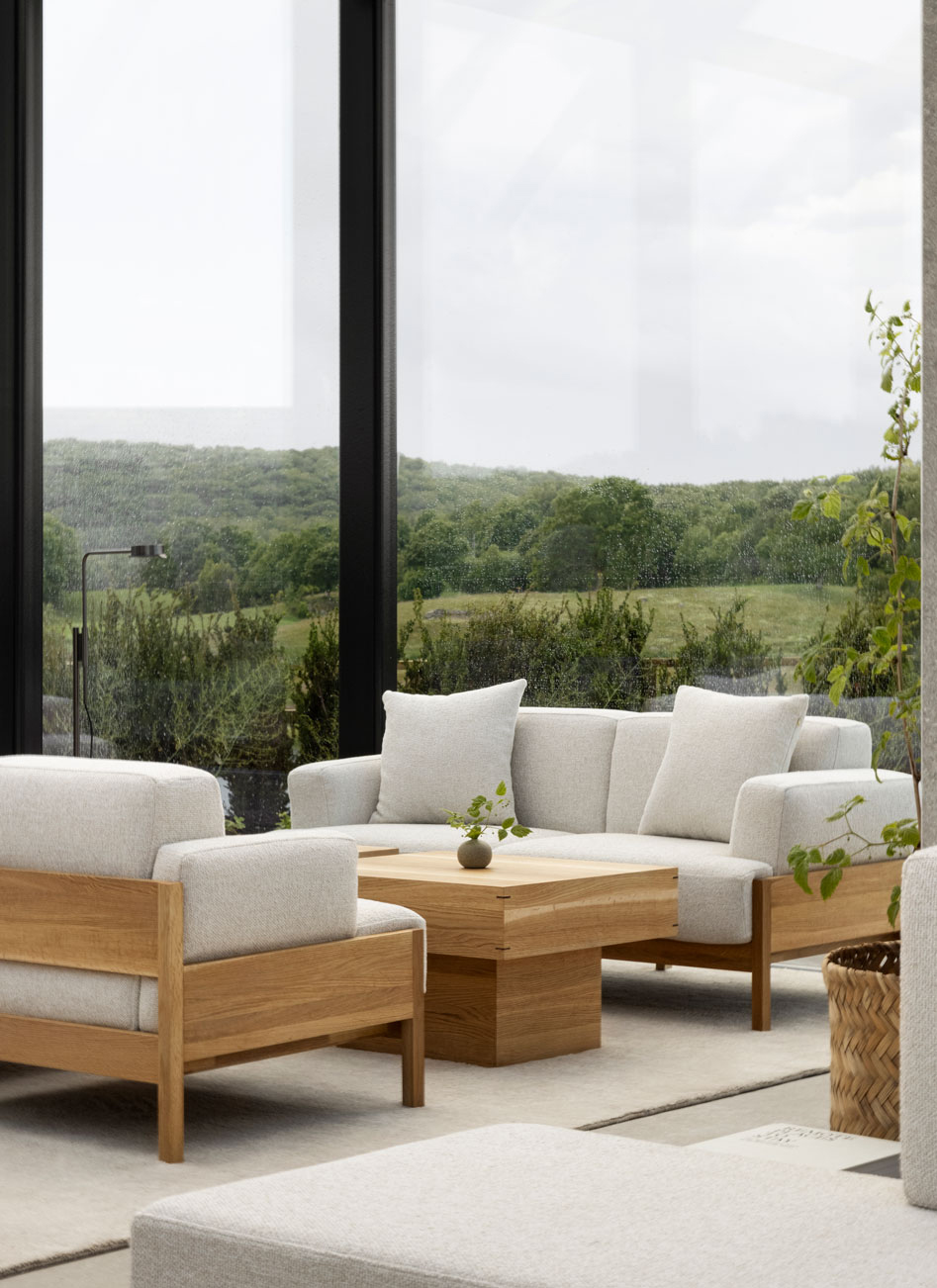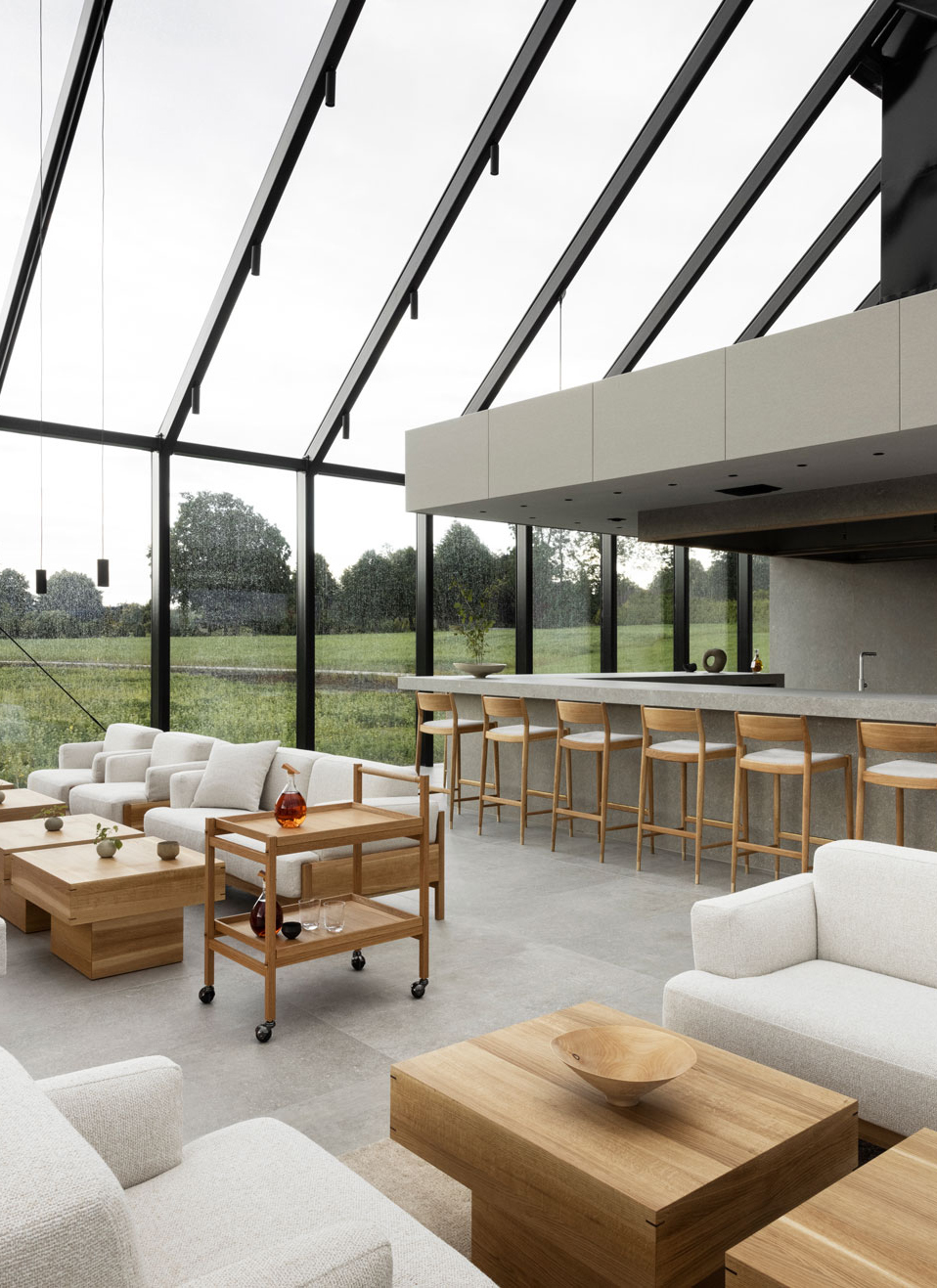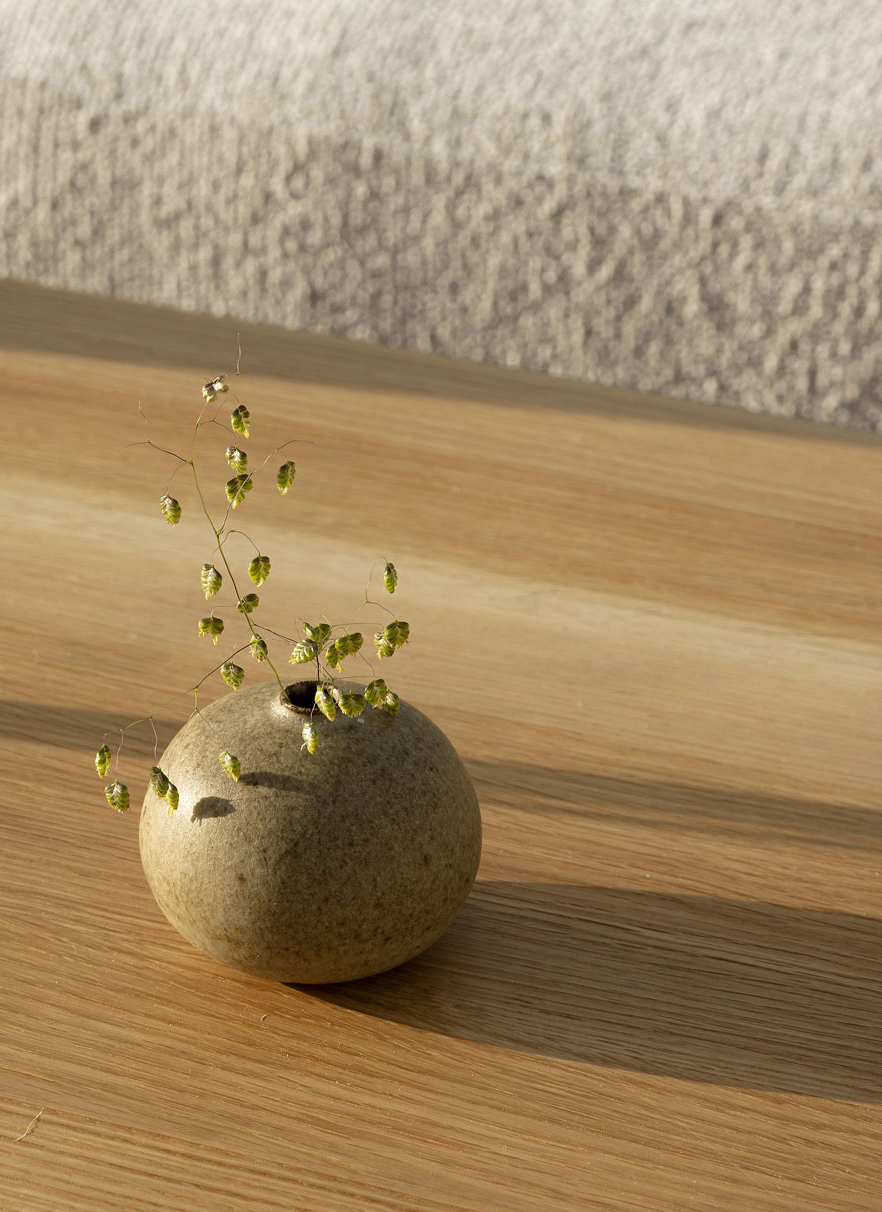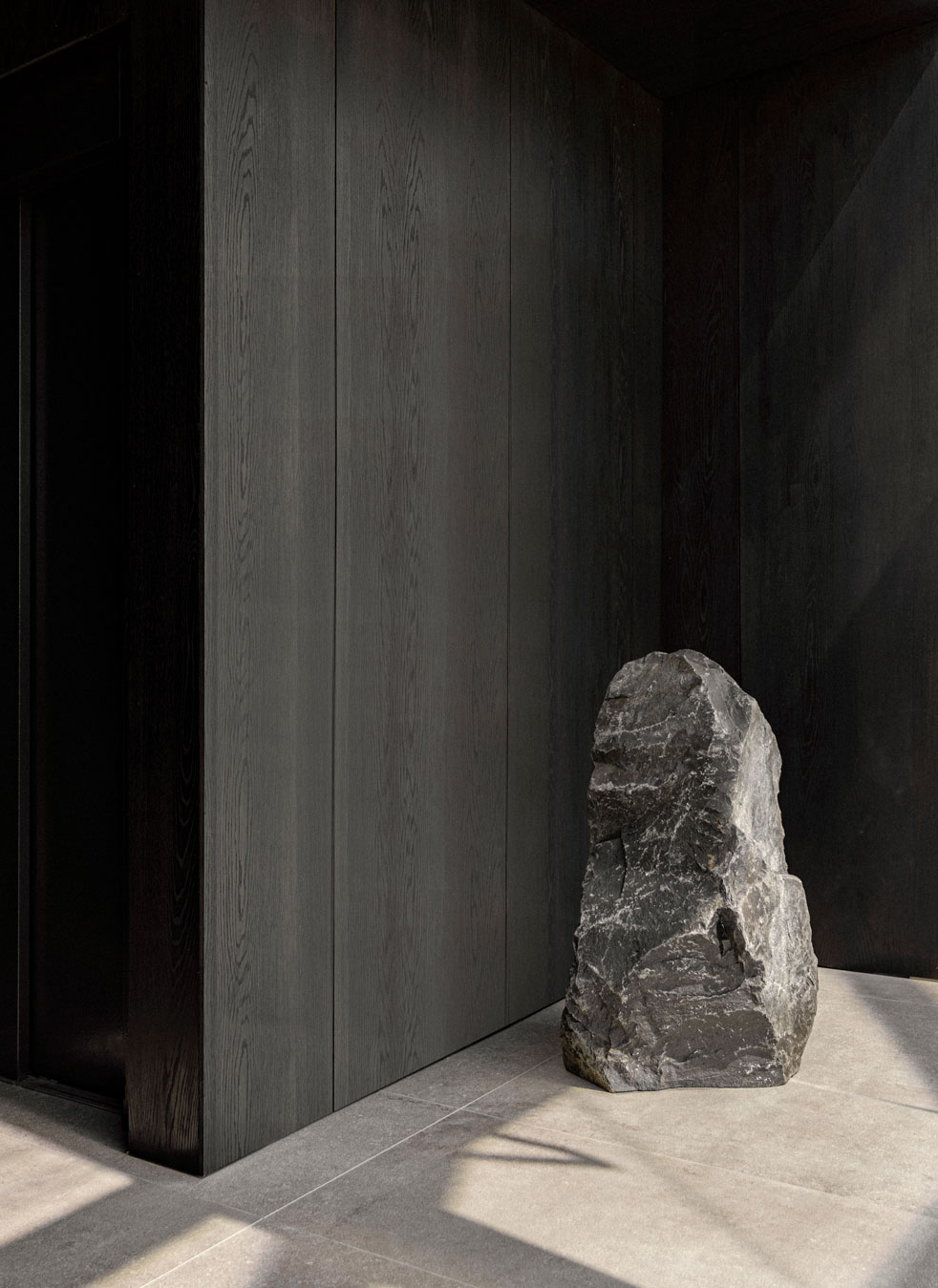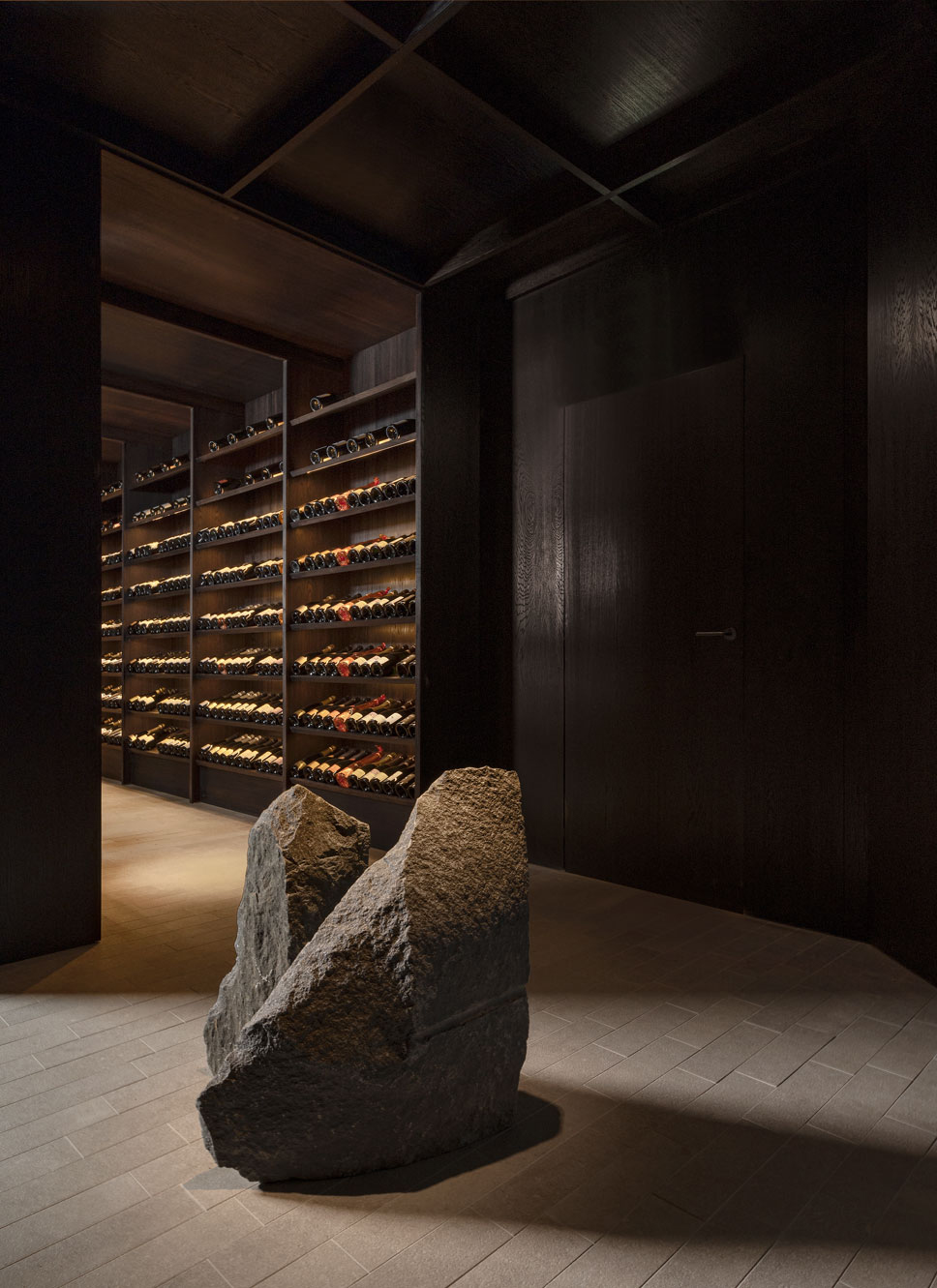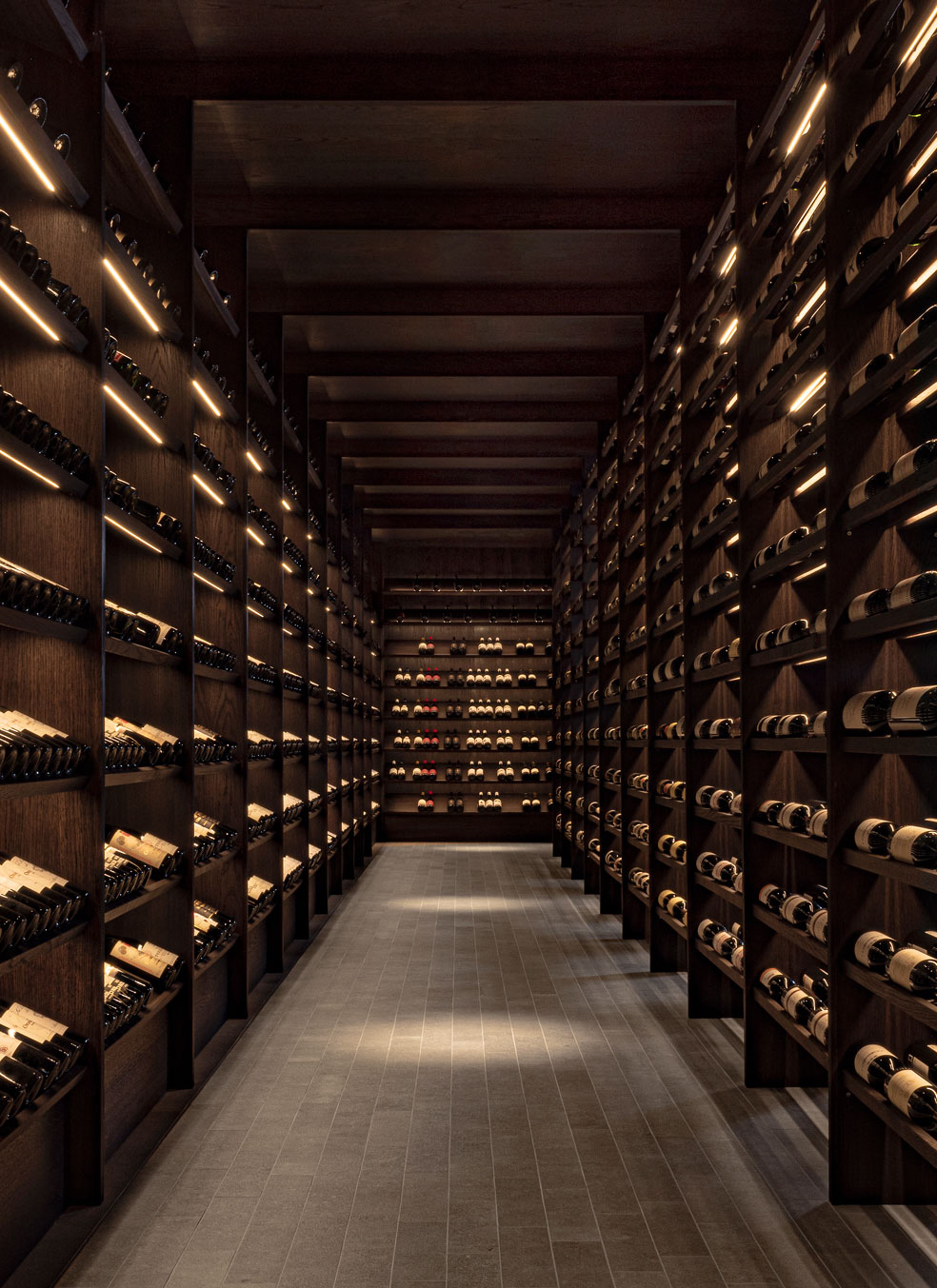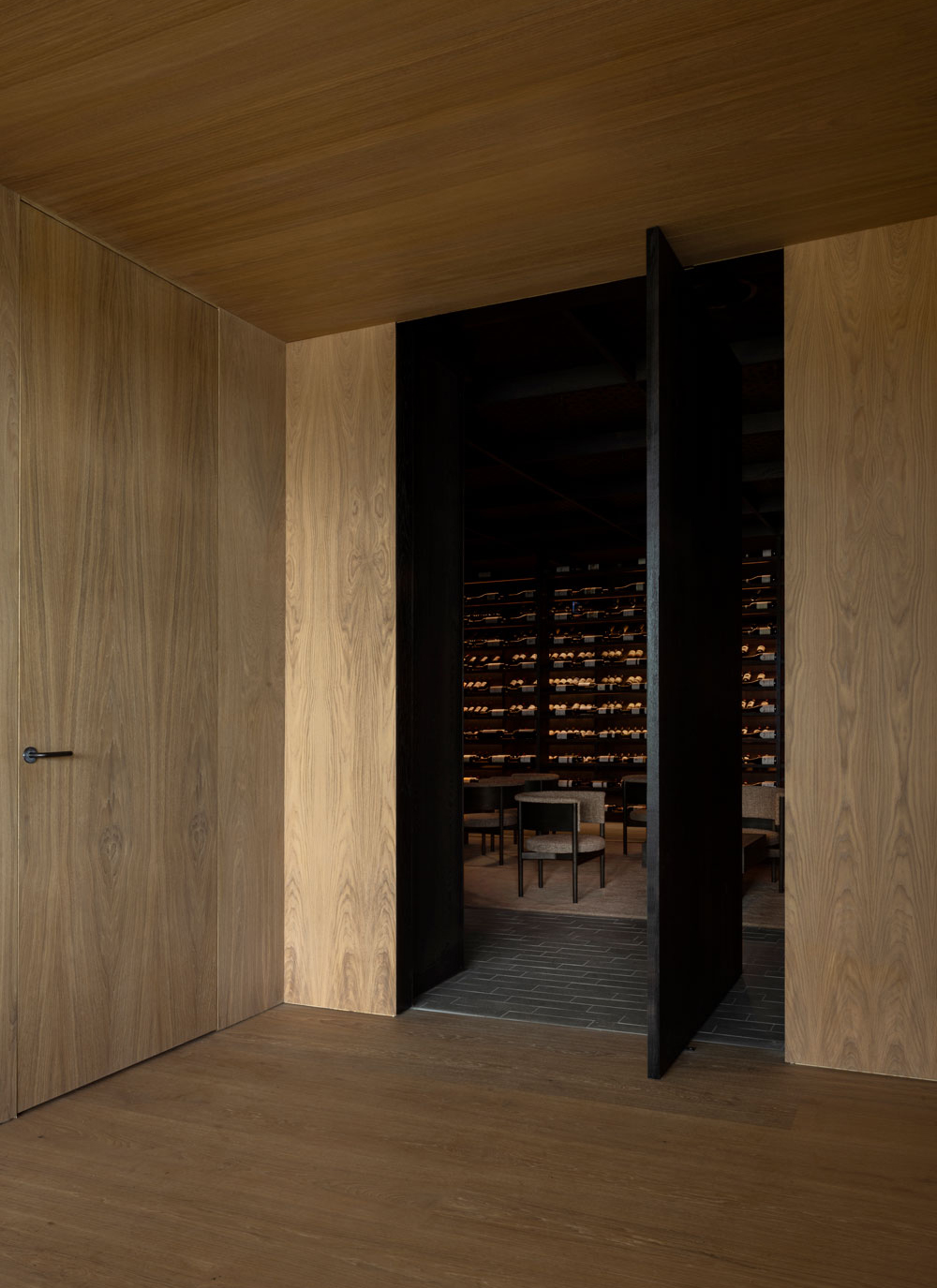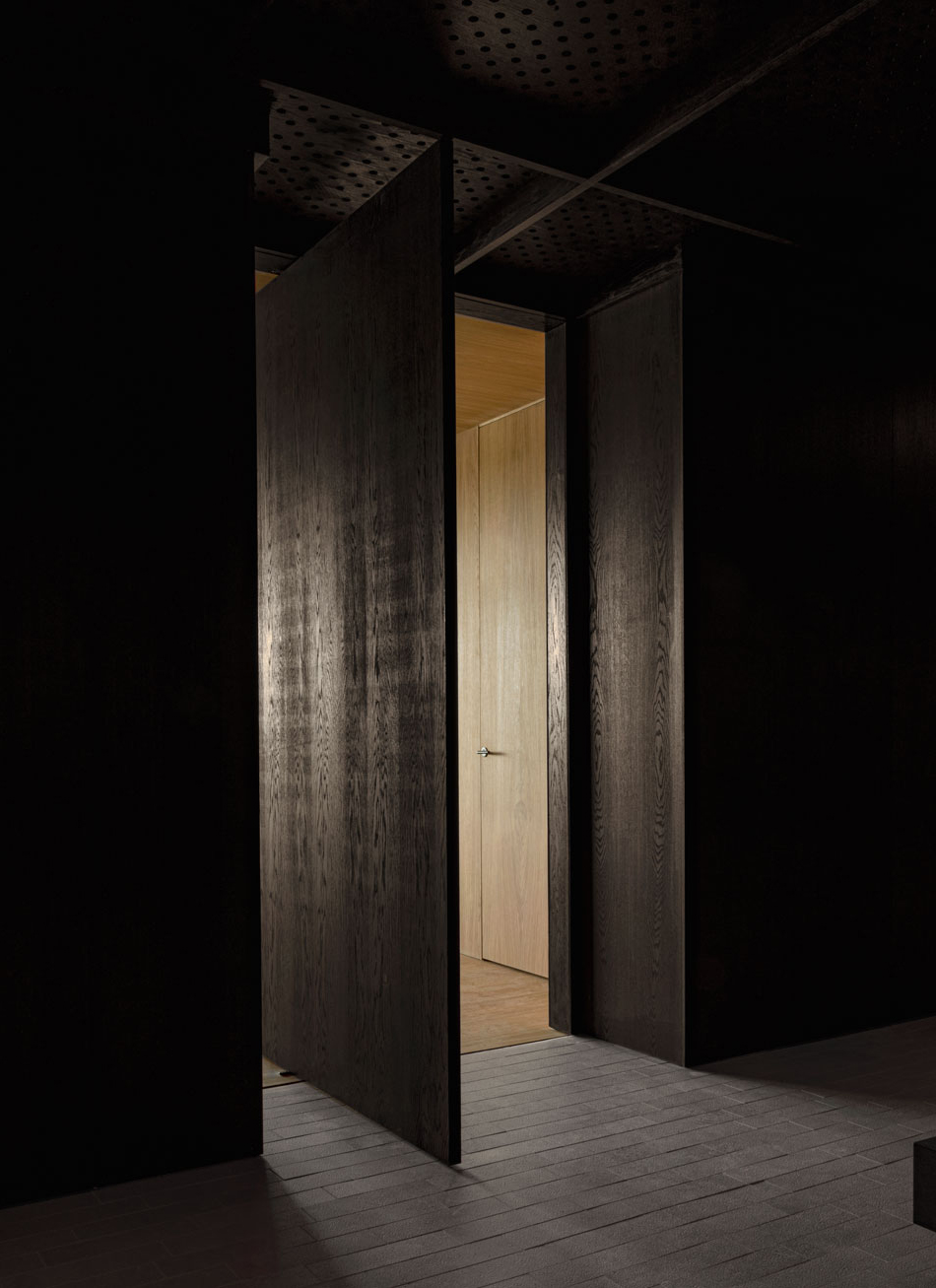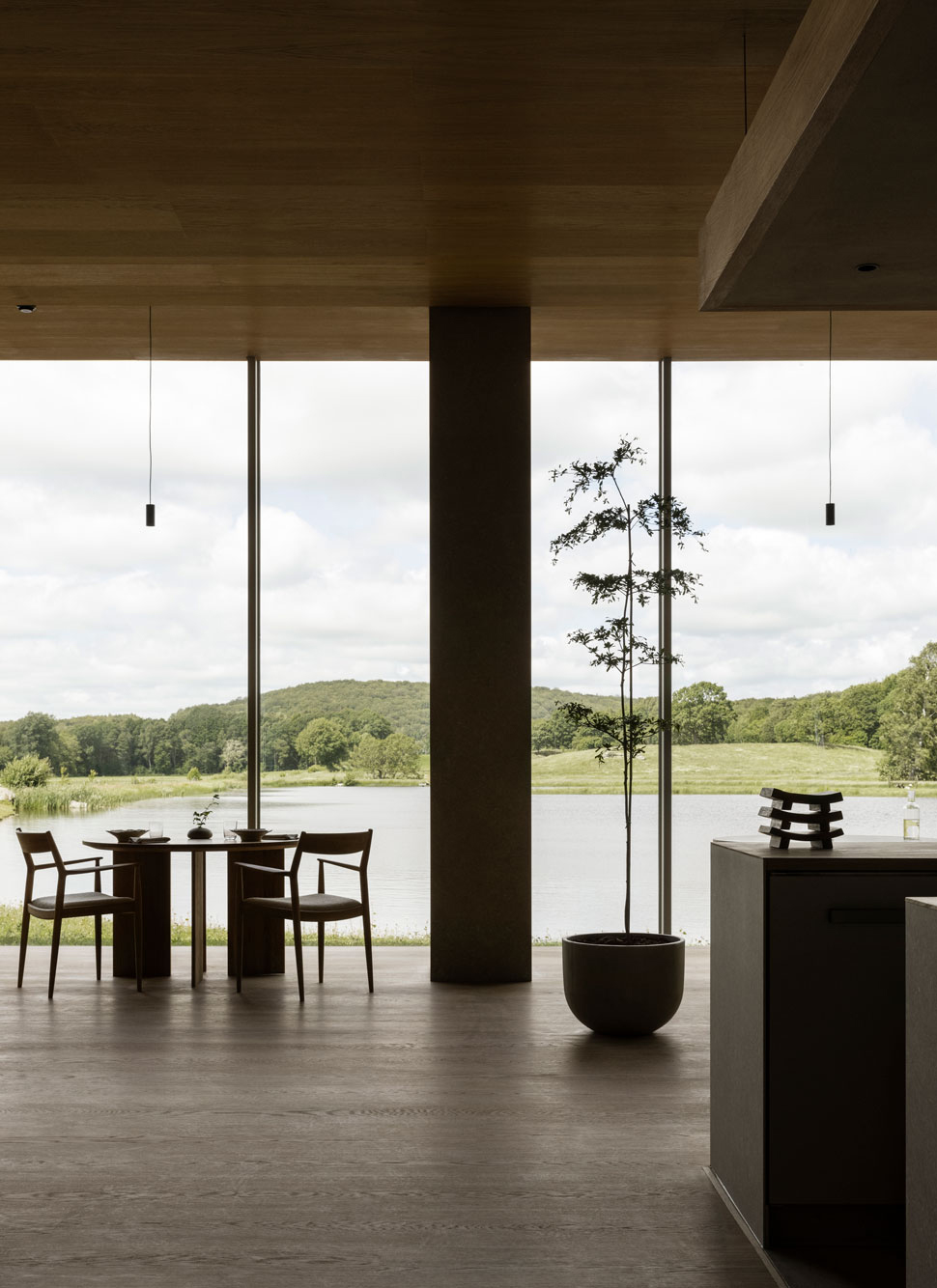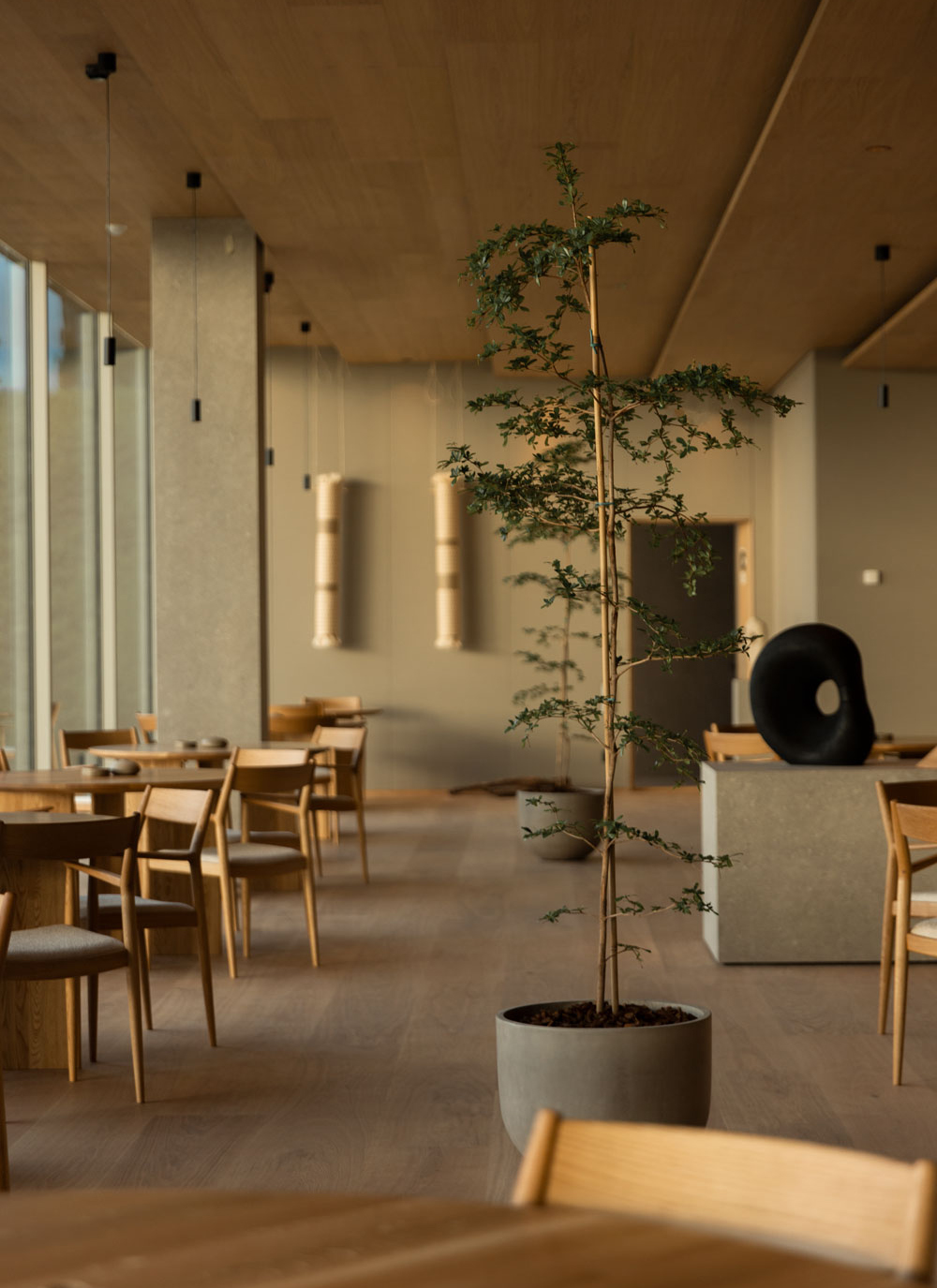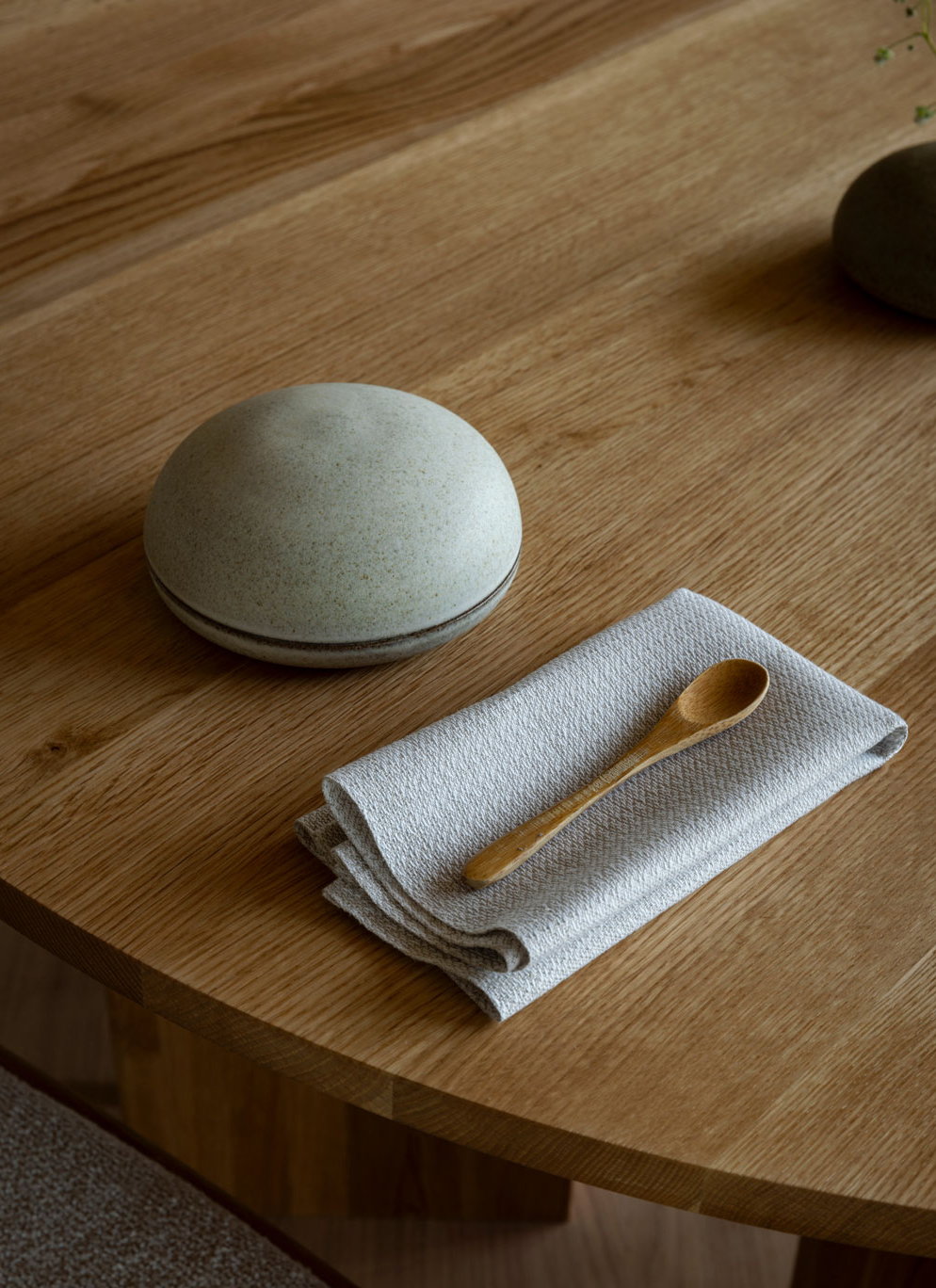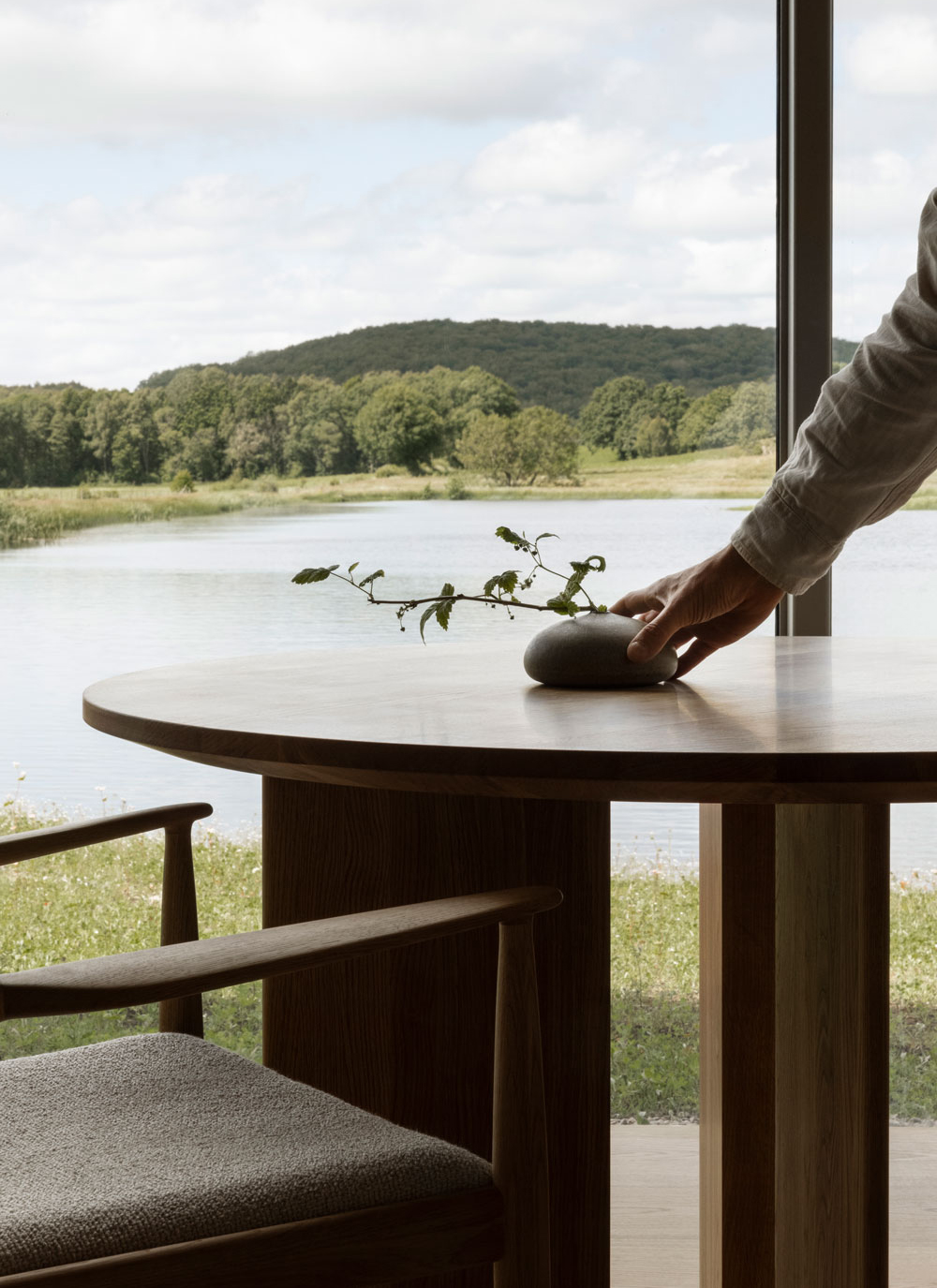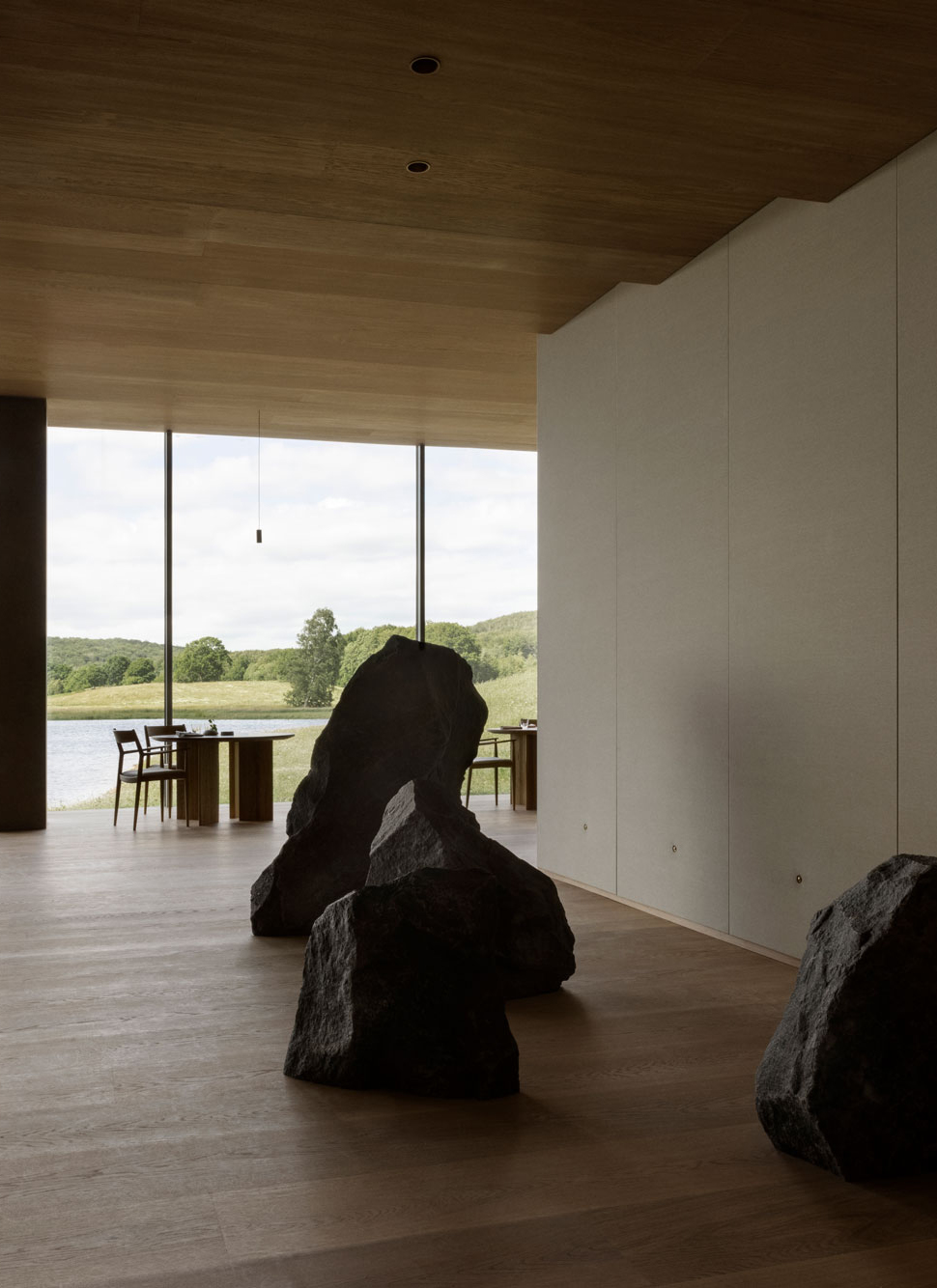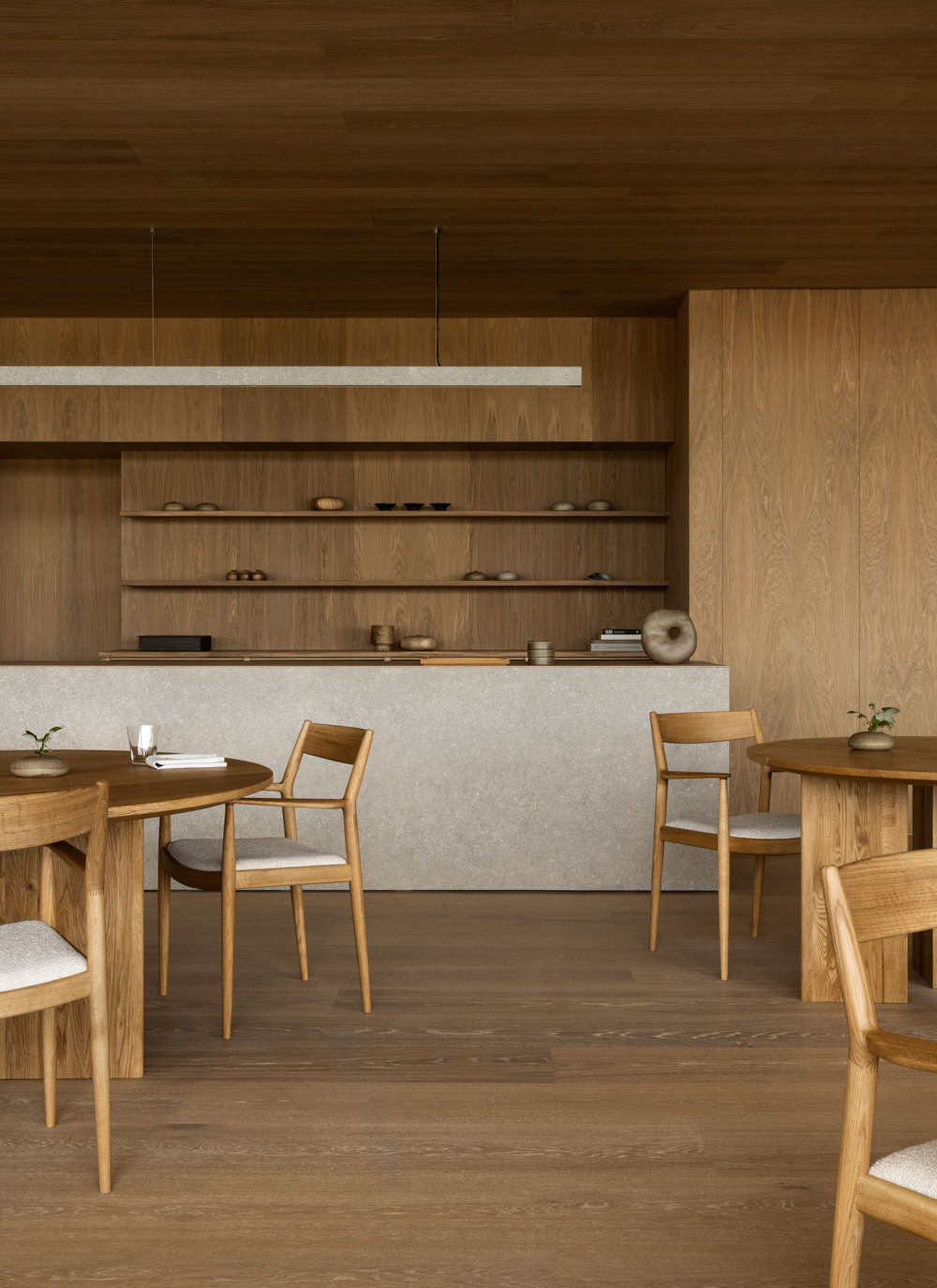ÄNG
Sitting as a solitary diamond in the undulating fields of Ästad Vingård – one of Sweden’s largest vineyards – Restaurang ÄNG is a culinary experience out of the ordinary that engages all senses.
Location
Halland, Sweden
Photography
Jonas Bjerre-Poulsen
Category
Hospitality
Year
2022
The partly underground Michelin-starred restaurant with a spectacular glasshouse entrance in the middle of the lush field is designed by Norm Architects and furnished by Japanese Karimoku to create a stimulating interplay between architecture, food, wine, interiors, and art that makes for a balanced and harmonious 19 course haute-cuisine experience.
The experience of ÄNG starts even before you step inside – walking through the lush meadow with crops and grasses on both sides of the winding pathway leading guests to the sparkling glasshouse that stands as a modern and refined interpretation of a greenhouse turned inside out. Having the iron structure on the inside, it stands like a prism in the middle of the field; Utterly sharp and smooth, mirroring the surroundings.
Closing in on the glass house, a small herb garden out front discloses the local touch and approach to the culinary experience you’re about to have. A protective hedge reveals a limited glimpse of a nearby lake but allows you to maintain focus right where you are.

Taking its name from the surrounding meadows, the new ÄNG explores both the surface and the deeper parts of the Swedish landscape as the souterrain view of the wetlands adds even more peace of mind.
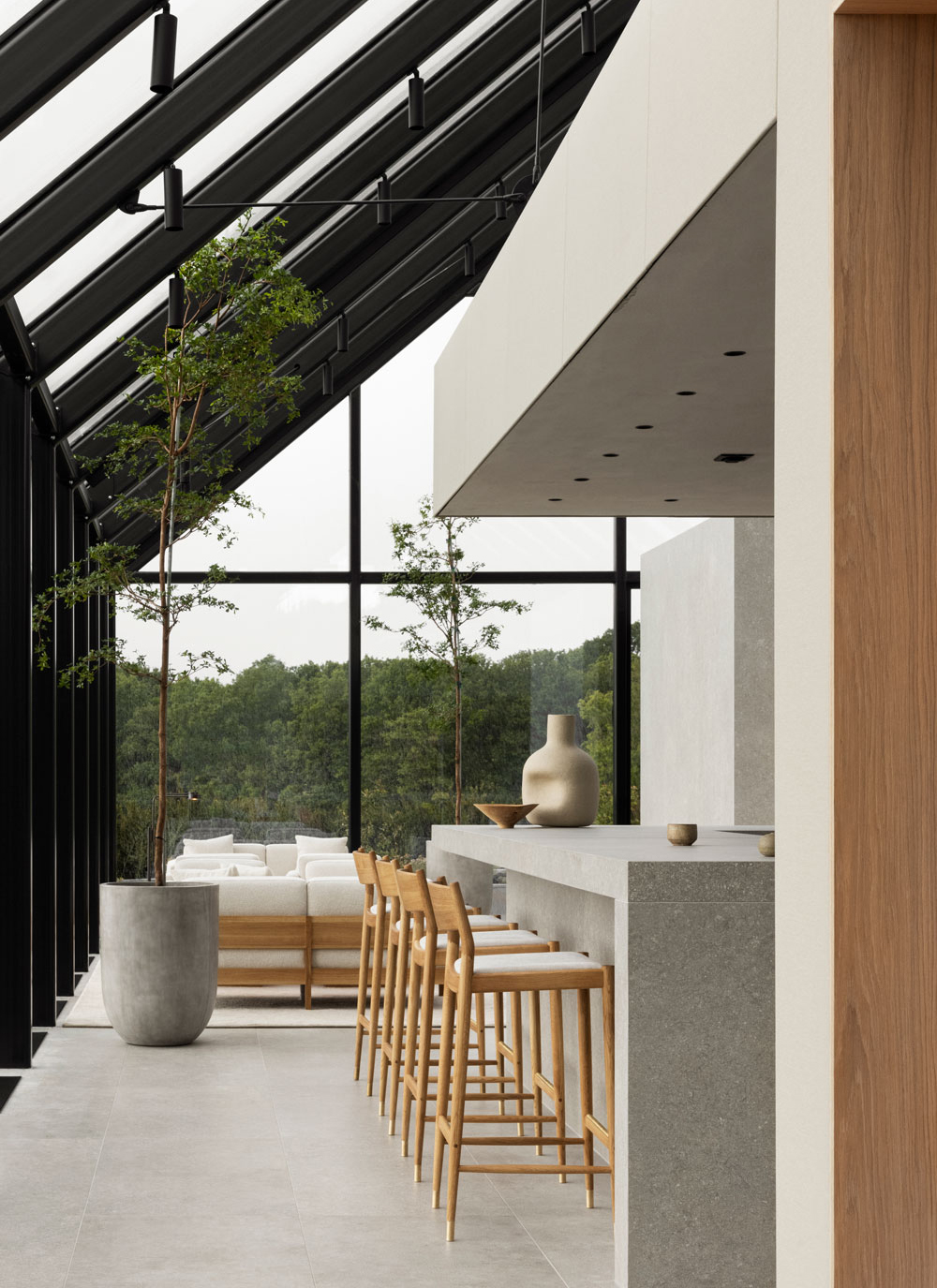
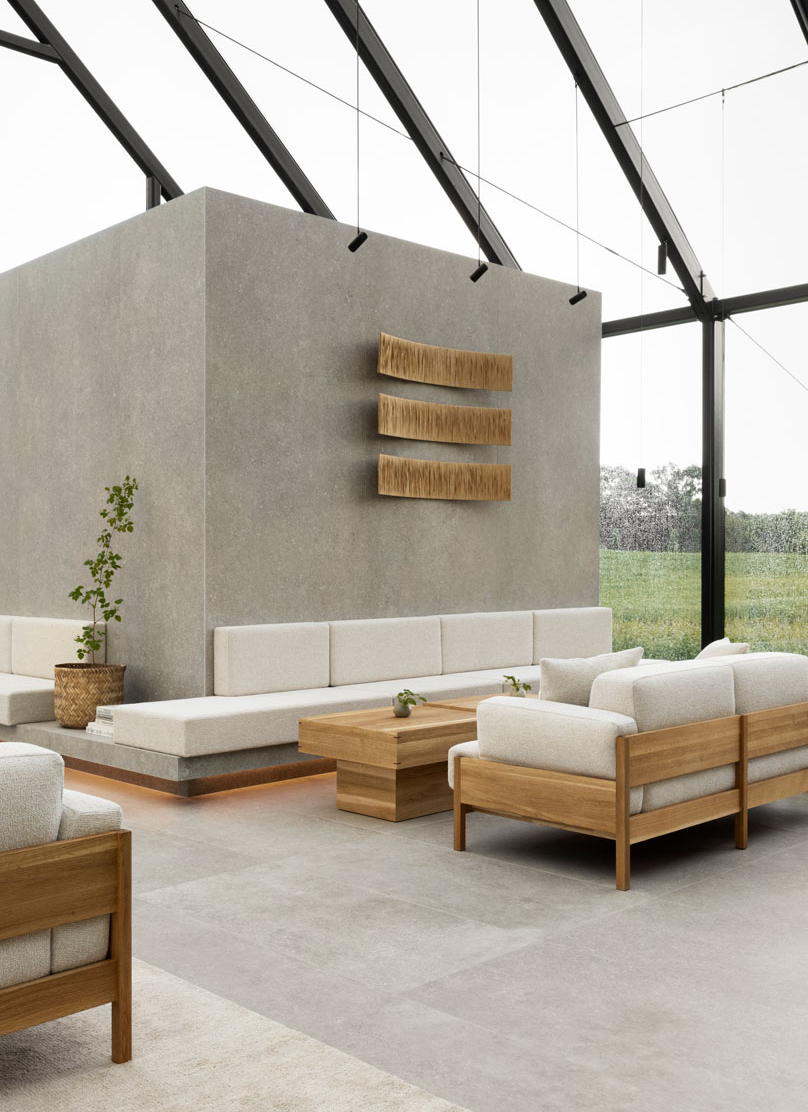
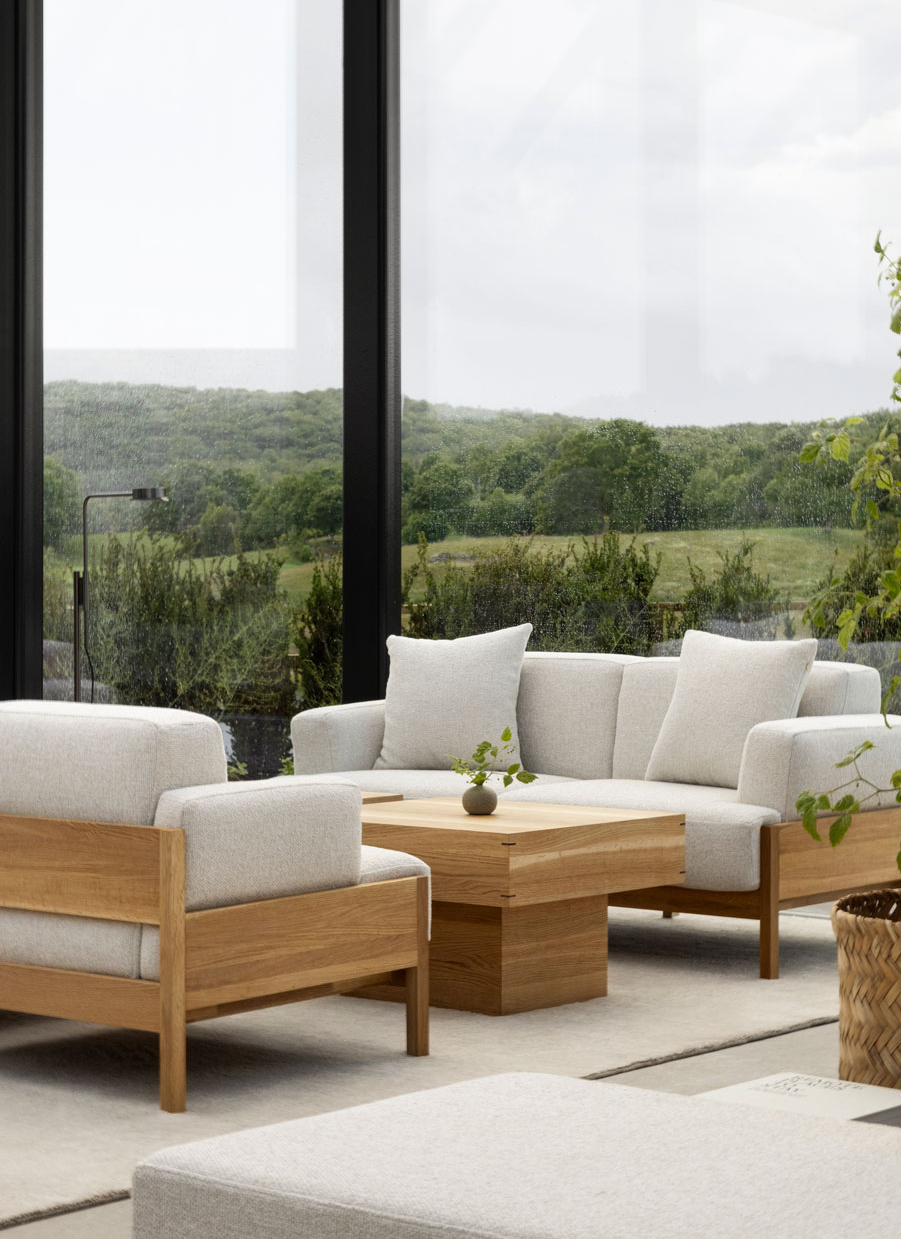
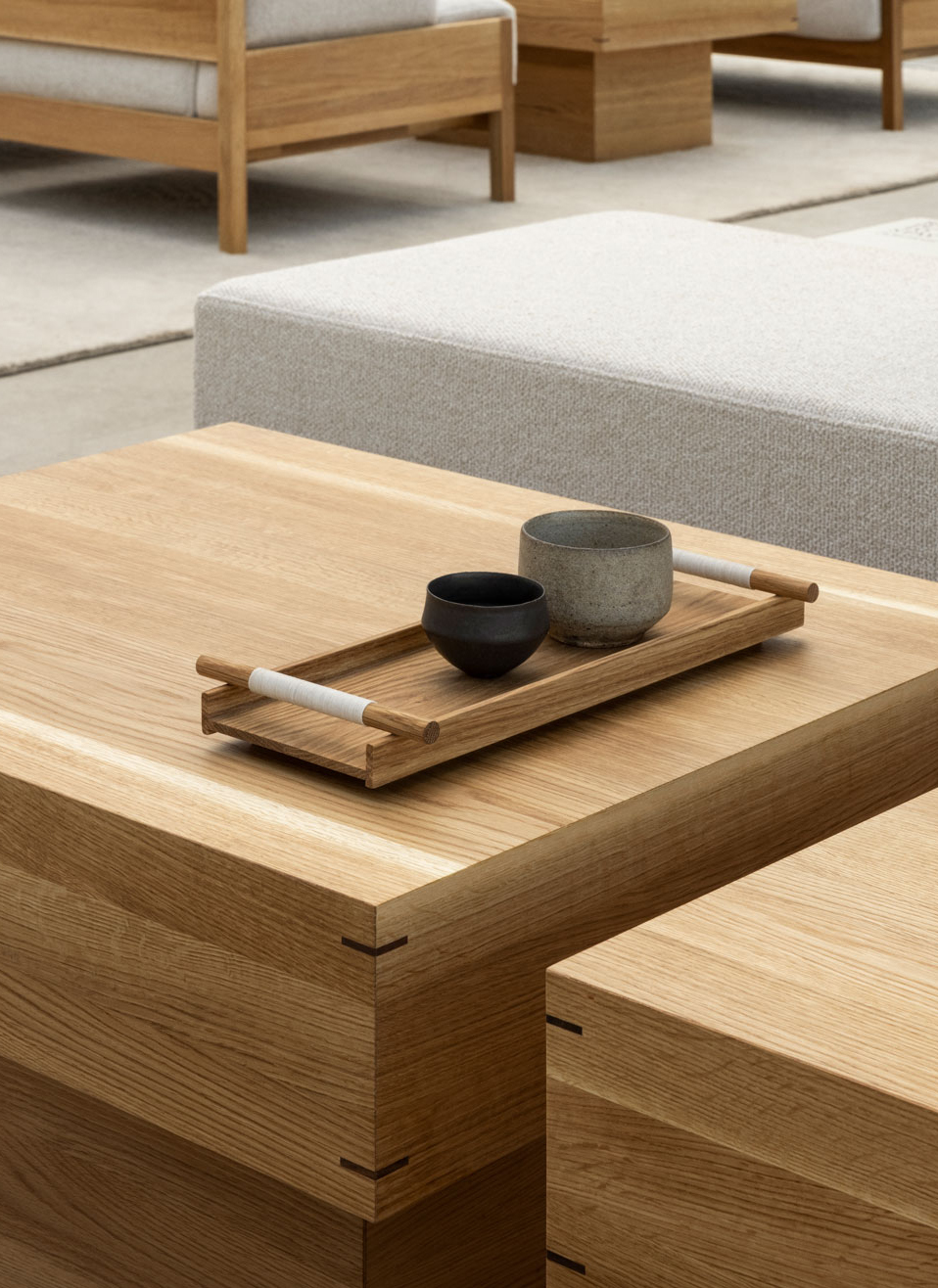
With inspiration found in both the unspoiled Nordic nature surrounding the premises of ÄNG and Japanese sensibilities in design aesthetics and craftsmanship, the interior provides a holistic, sensory experience that refines the culinary offering and reflects the identity of the restaurant.
Serving as a subtle indicator of the strong connection between ÄNG and the surrounding nature, the outside stone-flooring continues inside as you pull the heavy glass door open and continue the journey. The impression of the glass house is light and lush as you walk past an open kitchen with a grounding stone counter and bespoke artworks with an organic form language. As you sit down in refined lounge furniture by Japanese Karimoku in solid wood with visible woodworking details and a soft upholstery, while still having a feeling of sitting in the middle of the field with nothing but clear skies above your head, it is evident how the space dwells on the interplay between nature and culture, capturing the spirit of the unique locus.
As the staff starts to decant local champagne and present astounding appetizers made from homegrown produce that’ll make you sit back and simply enjoy the 4,5 hour long pause from the hustle and bustle of the everyday, the sun is slowly descending beyond the meadow, serving as a calm and ever-changing backdrop to the evening.
“
The fundamental ambition behind the Michelin-starred Restaurang ÄNG is in many ways in line with Norm Architects’ design philosophy of striking a delicate balance between all the sensory experiences that make up a space to create a harmonious setting, where all elements support one another.
As the evening moves along, the guests will be led to a hidden elevator, temporarily ending the bright summer evening, as it slowly escorts you underground and you step out into a dark catacomb-like winecellar with a subdued feeling and sparkling wines of own production as well as high-end French labels.
With the changing of light, we play on the phenomenon of Chiaroscuro; a technique from visual arts used to represent light and shadow as they define objects in order to achieve a sense of volume. When stepping into the shadows, the vision weakens while the remaining senses intensify. One automatically pays more attention to sounds, smells, tastes and touch and even the intuition and instinct are strengthened. This way, the surprising transition and changing of scenery prepare the guests for the next part of the holistic dinner experience.
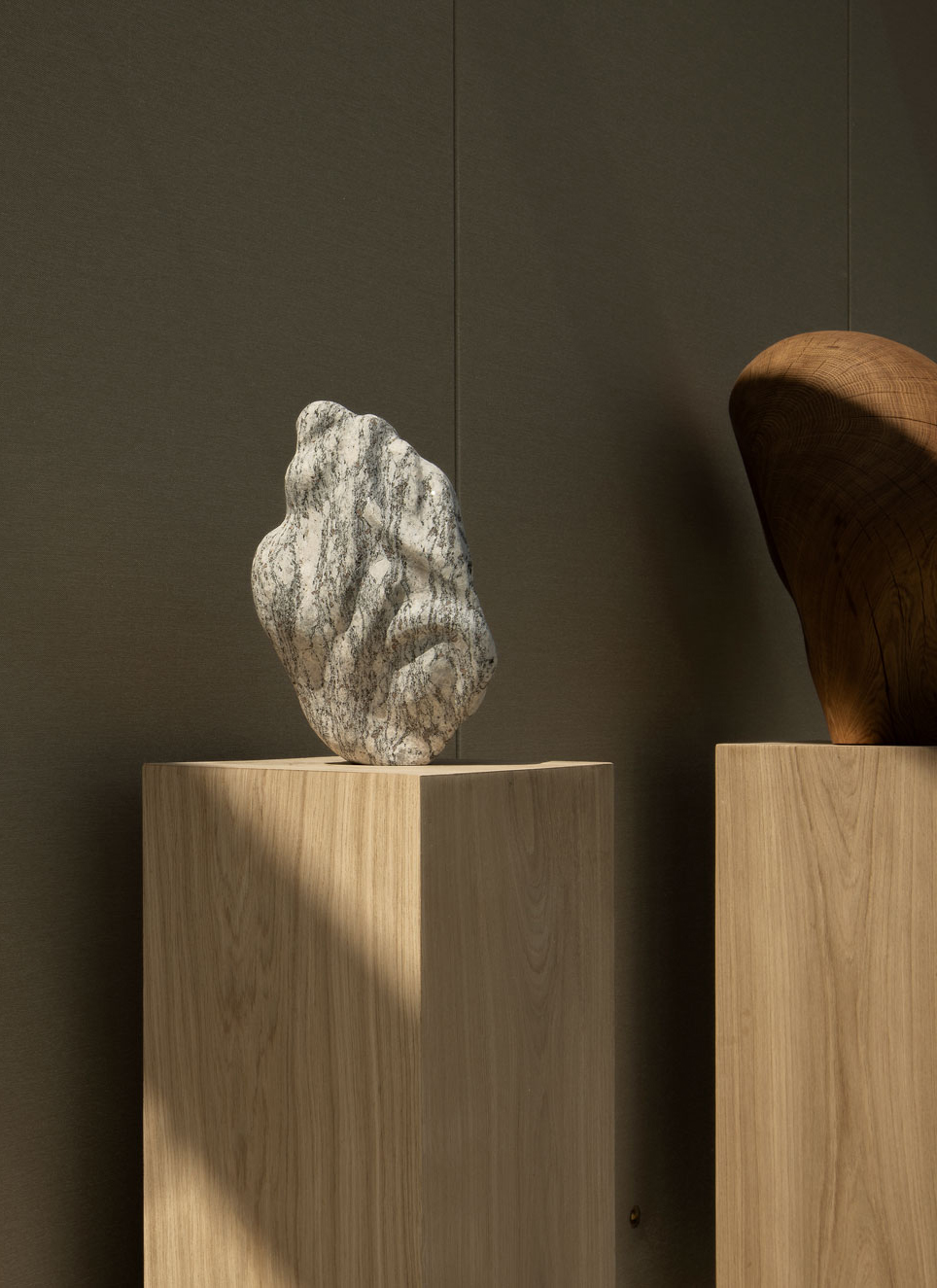
Integrating thoughtful artworks and sculptures are a vital part of the interior and atmosphere at ÄNG.
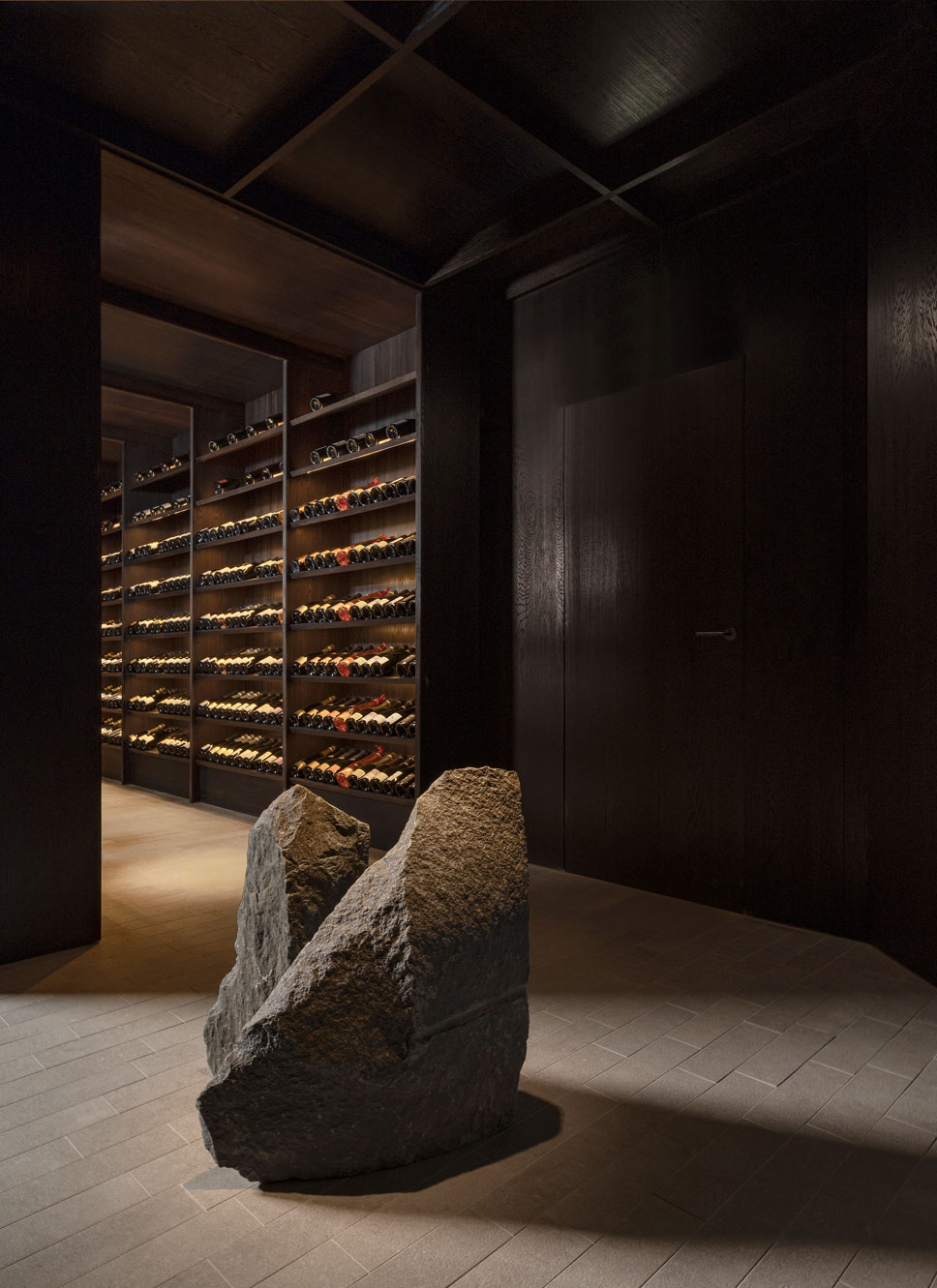
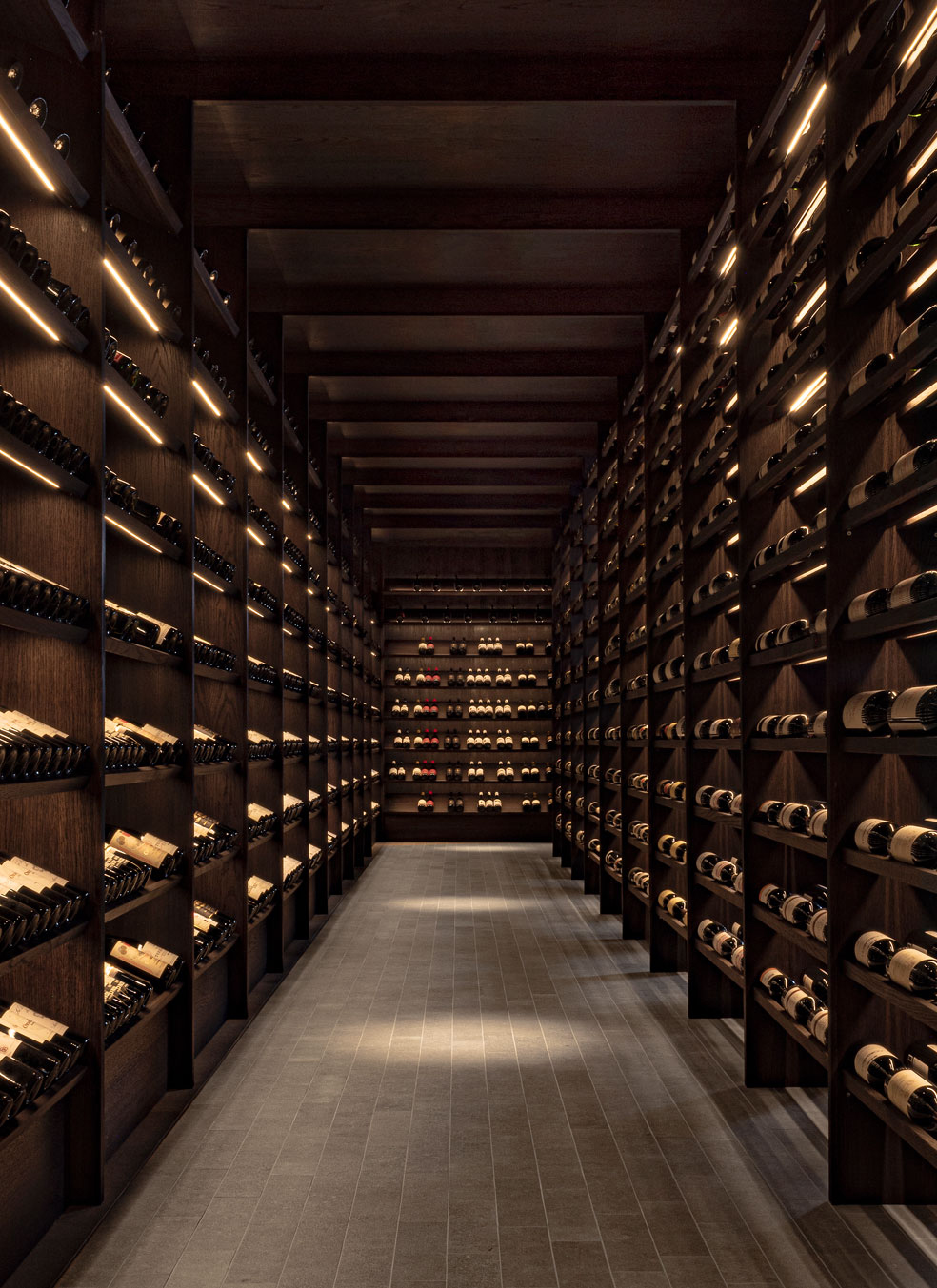


The tiles cut like a brick floor, fostering the cave-like feeling of the wine cellar, meets the wooden floor from Danish Dinesen as you step out into the main dining room with floor-to-ceiling views of a natural lake and the rich fauna surrounding it. The setting turns lighter once again and your senses are alert, ready for the next part of the dinner experience.
As the sommelier leads the way through the impressive shelves to pick out the wine for the next part of the dinner, you’ll also catch a glimpse of a quiet and dark lounge setting in the middle of the space, letting on that there is so much more to come.
Inspired by the Japanese Karesansui gardens of raked sand and stone, renowned for their transcendent beauty, we travelled to Växjö to collect the ready-made sculptures of nature from a giant quarry. An important aesthetic principle underlying these dry landscape gardens is yohaku-no-bi, meaning ‘the beauty of blank space’.
Having learned from the now deceased legend, Masatoshi Izumi, we too see the raw beauty in stone and have realized how the sculpture is already within – you just have to look for it. Now, the characteristic stone sculptures stand as small interpretations and simulations of the surrounding landscape, welcoming you as you step out from the darkness of the wine cellar and into the main dining room through a giant pivoting wooden door.
In addition to references to Swedish nature and the use of renowned Japanese furniture design, we implemented acoustic walls made of canvas from Kvadrat, chosen in a shade reminiscent of jute sacks in which you place crops and grain. It’s not just a backdrop, but a real experience.
The evening ends back in the glass house, where the experience comes full circle as the sun has now set and the desserts are being served. ÄNG truly is a venue enabling both guests and staff to explore, learn, eloborate and to create memories.
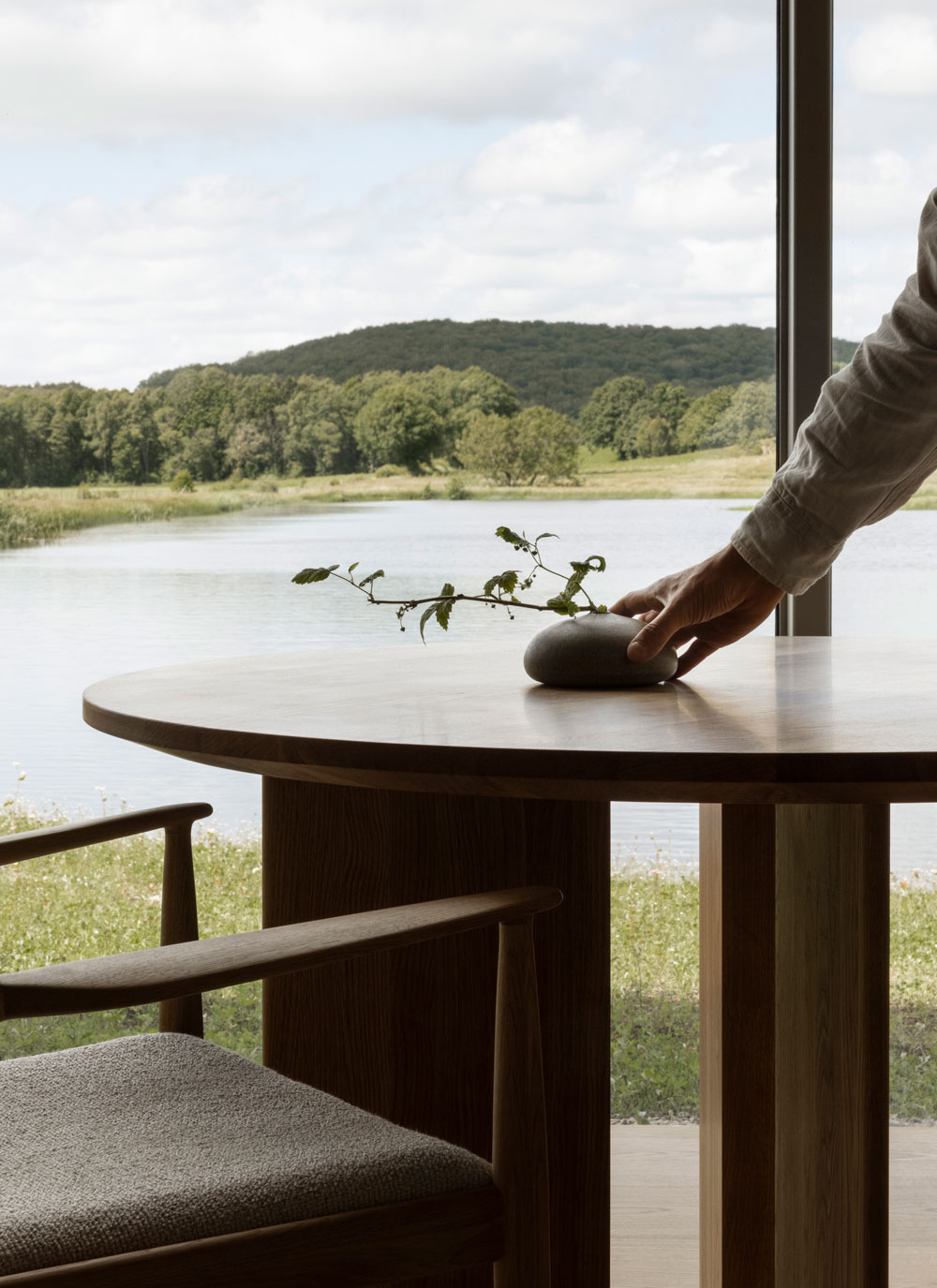
In an effort to translate the Swedish nature and its aesthetics in an honest and modern way, we placed small vases that look like stones from the field.

